Glasgow
Do you know what symbolism Glasgow has? A bird that has never flown, a tree that has never grown, a bell that has never rung, and a fish that has never swum.
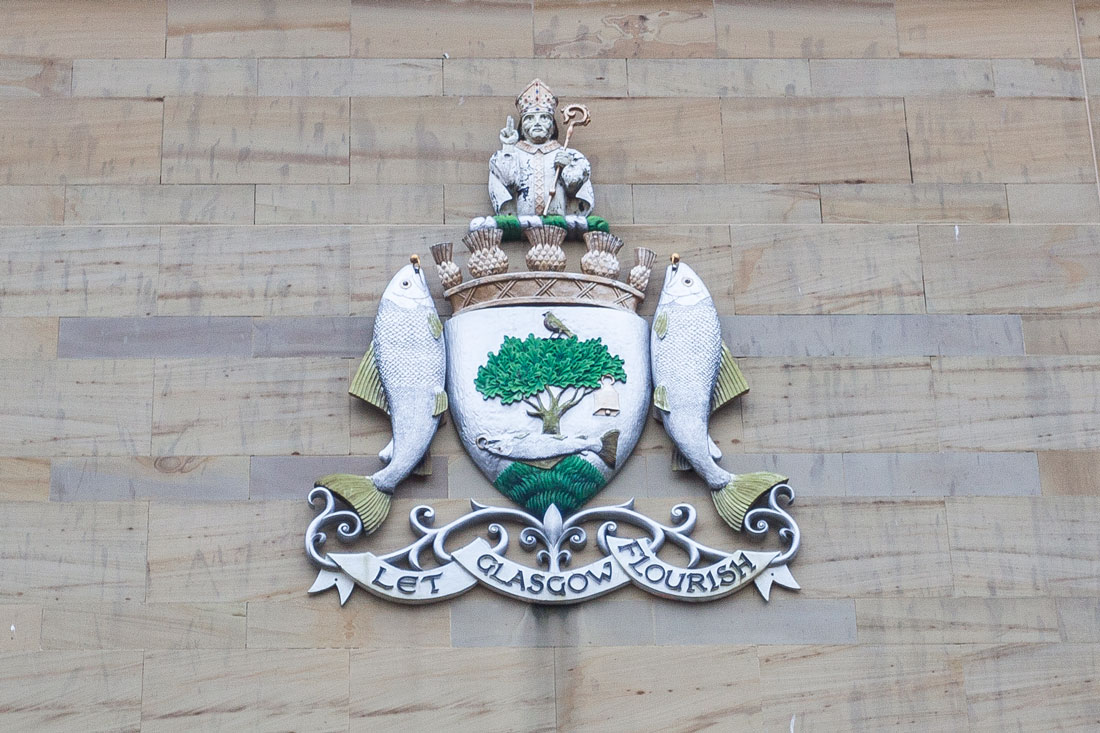
You can immediately tell that there is a unique atmosphere here. The main attraction in Glasgow is the Charles Rennie Mackintosh School of Art. He was a Scottish architect who is extremely famous and revered in Scotland, slightly less so in England, much less in Europe, and completely unknown in Russia. Mackintosh created a wide range of things: fonts, furniture, chandeliers, paintings, and buildings in the Art Nouveau style.

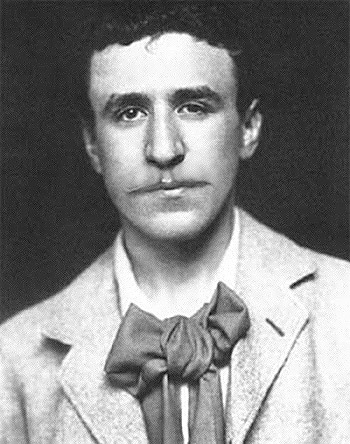
The Mackintosh School is an unusual building. Its right and left sides are identical, while the center is slightly asymmetrical, and this asymmetry is so unusual and striking that one feels inclined to “correct” the house, even if only in their imagination.
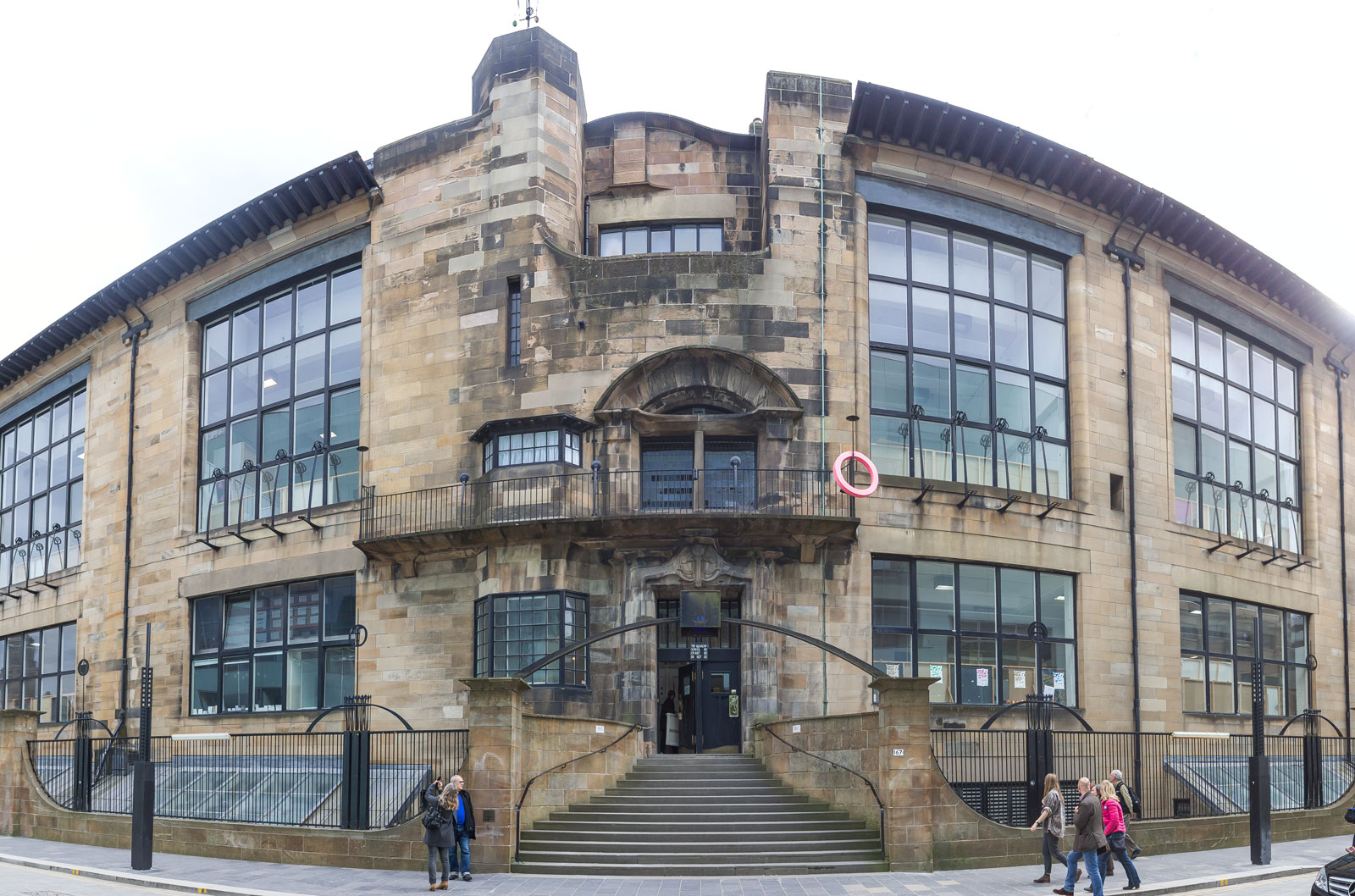
The building can be visited on a two-hour tour. Unfortunately, photography inside is strictly prohibited, and the guide leaves no opportunity to do it unnoticed: they constantly stay close to the group and prevent anyone from lagging behind, and the sound of the shutter is perfectly audible in the quiet atmosphere. Therefore, I will show photographs found on the Internet.

The school was built in 1909 and leans towards the Art Nouveau style, although it is filled with various elements: Mackintosh had a fondness for Japan and borrowed many interior elements from Japanese architecture; there are classical statues in the corridors. The entrance is designed with two doors: one for entering and another for exiting. The separation is necessary to prevent students, rushing around with their work, from accidentally colliding head-on.

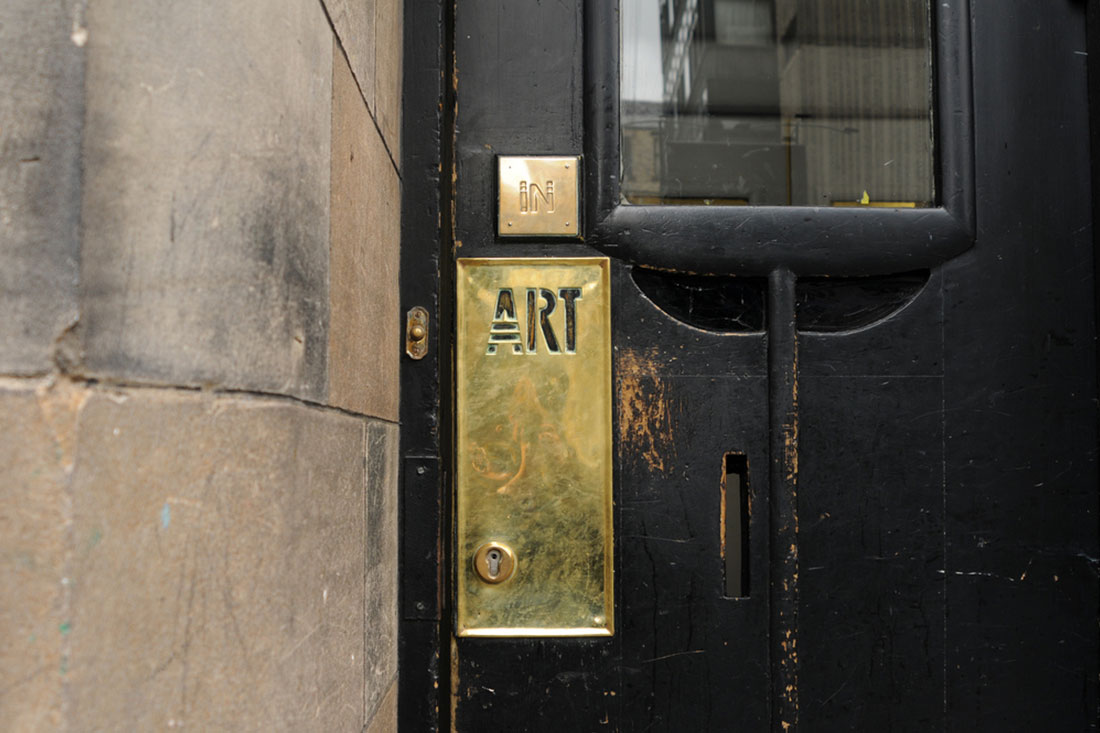
The interior of the school is insane. Mackintosh turned it upside down: the upper floors are as dark as in a basement, while the lower levels are bright as if outside. On the staircase, it’s impossible to tell which part of the building you’re in. For example, this is what the top floor looks like.
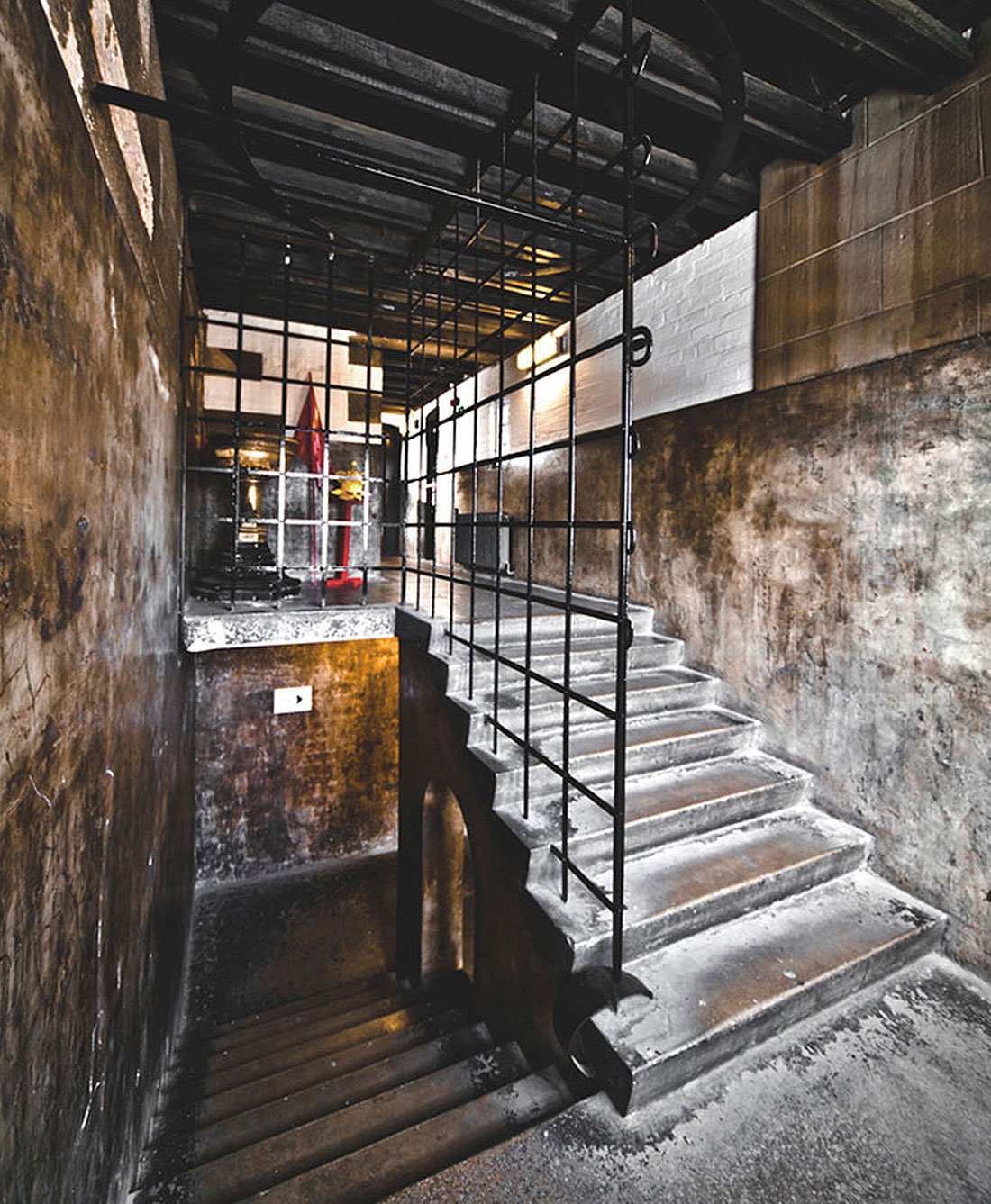
On the top floor, there is a bright, glass-enclosed terrace. It is positioned in a way that it receives sunlight for most of the day. However, there isn’t a single window in it.

There is only one small window, in the most inconvenient place, in the corner next to the wall. Mackintosh’s peculiar sense of humor was to create a room with an excellent view of the city but turn it into a sauna.
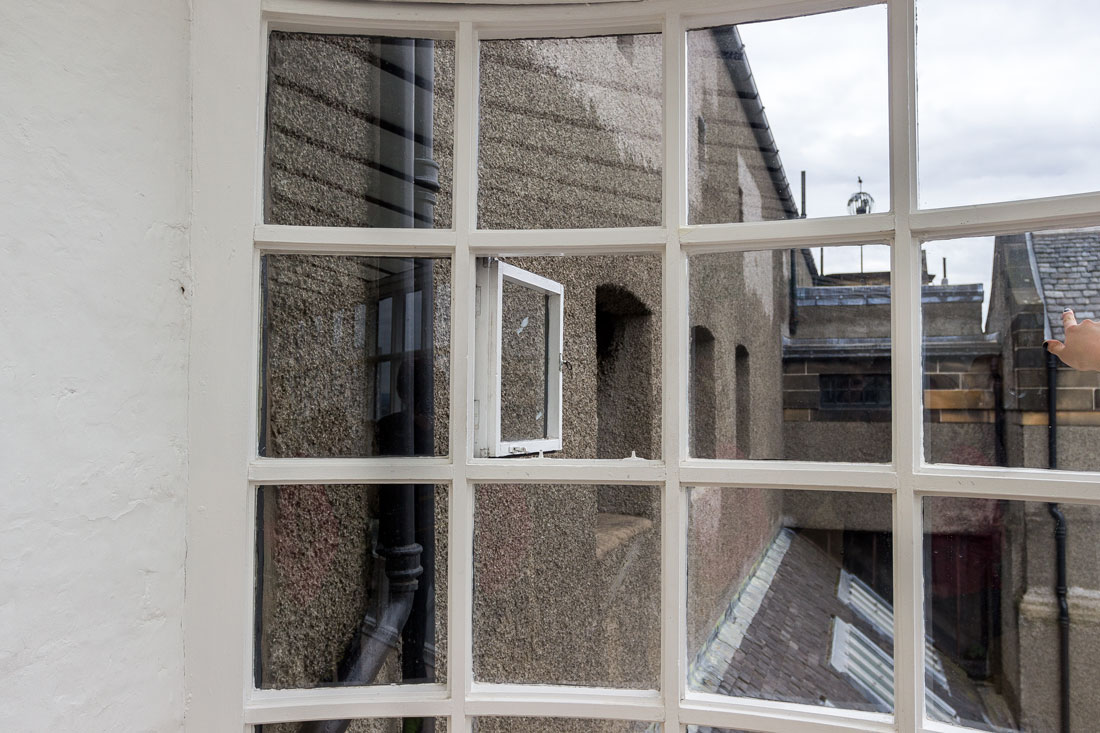
The view from the terrace of the city.
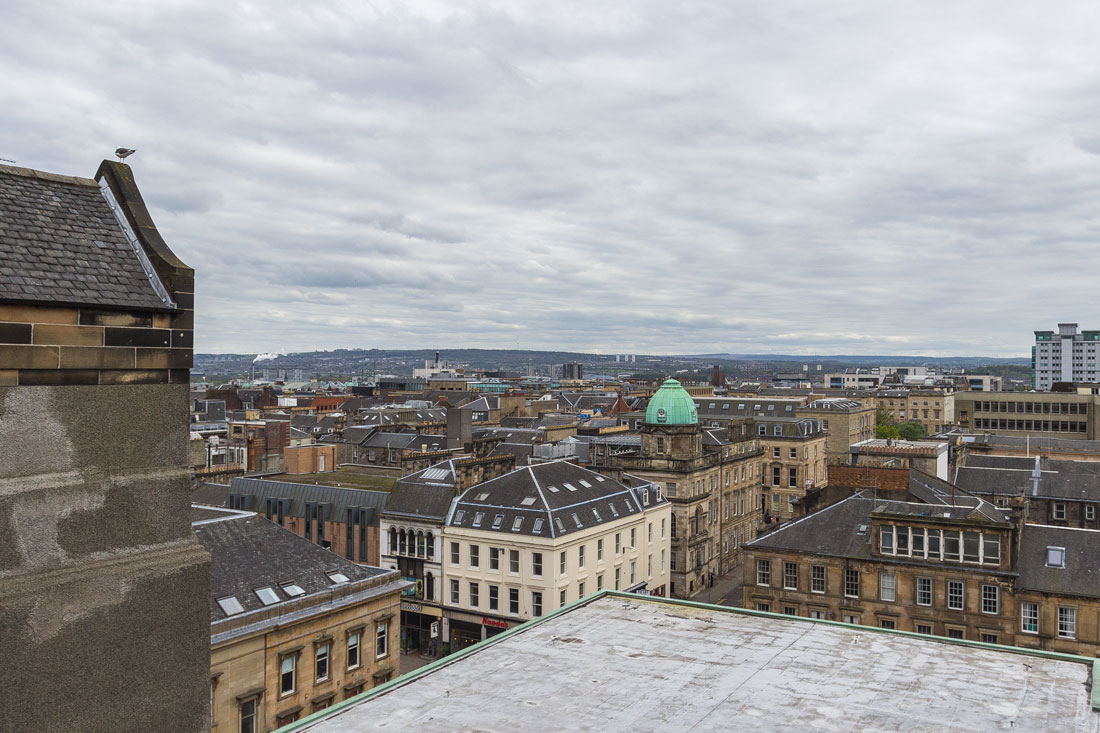
The library is made of dark wood, and it is quite dim inside. The chandeliers in the library: one might think they were made much later, but no, they are the original chandeliers designed by Mackintosh. It’s surprising because such a shape of light fixtures could only have emerged in the 1980s.

Mackintosh also collected furniture in the Art Nouveau style. The chairs in his collection had large lattice backs and small seats.

Glasgow is Scotland.
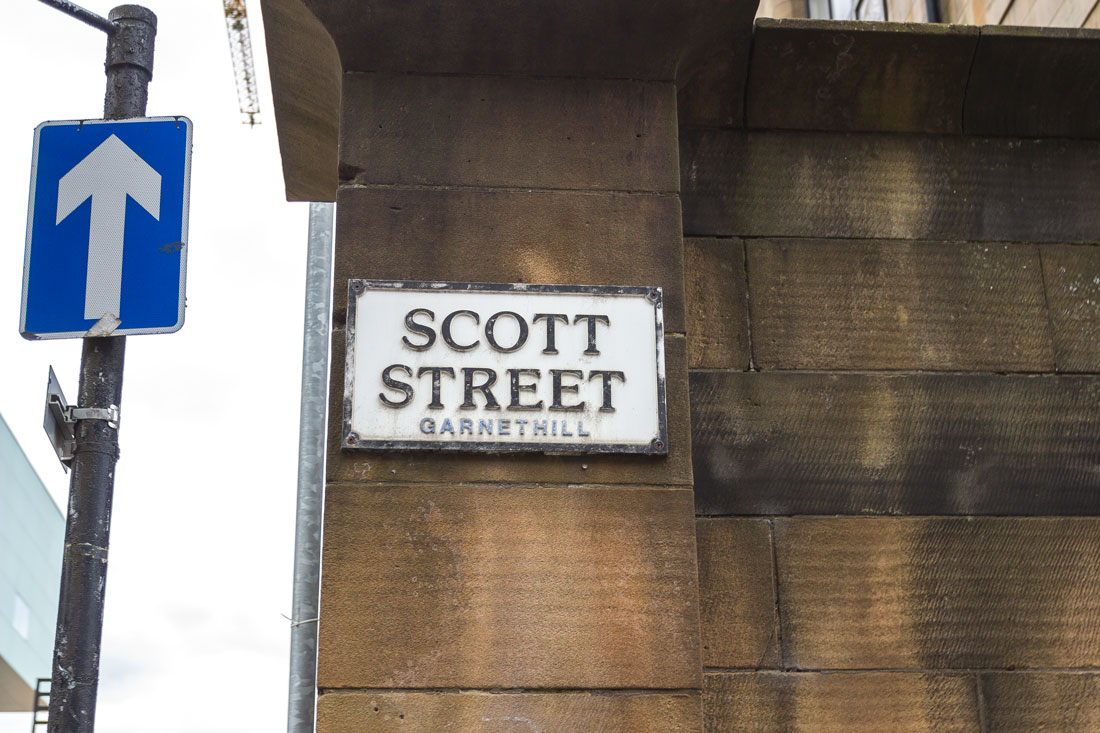
From the outside, it may seem like it’s all one country: England or the United Kingdom — it doesn’t matter. In reality, three separate nations fit on this small island: England, Scotland, and Wales. The first three are part of the United Kingdom, and together with neighboring Northern Ireland, they constitute the United Kingdom.
So, Scotland is fighting for its independence from the Kingdom, and a referendum on this matter will take place in 2014. Preparations are already underway for the referendum. Campaign posters are hanging in the city.
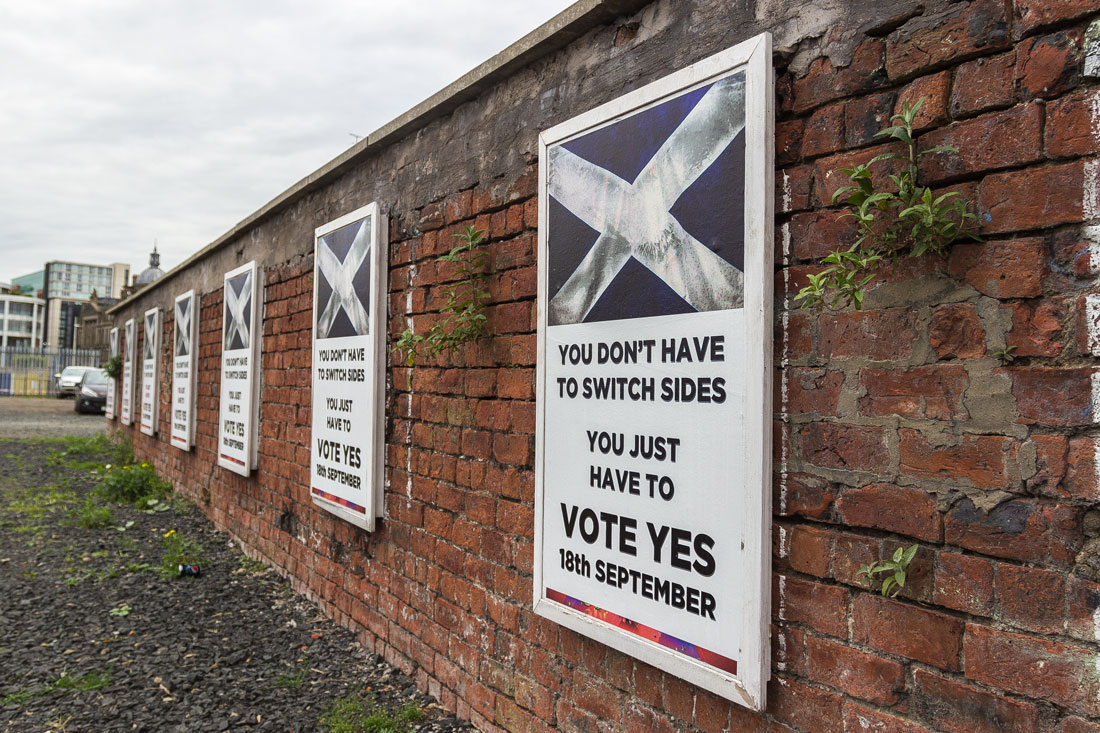
Police officers in Scotland wear bright green uniforms, and in rainy weather, they wear a raincoat. This gentleman is holding a “Stop” sign on a dangerous stretch of road while children are walking home from school. For some reason, he’s gesturing with his hand to avoid being photographed. I managed to take a photo of him while passing by, and he didn’t call out to me.
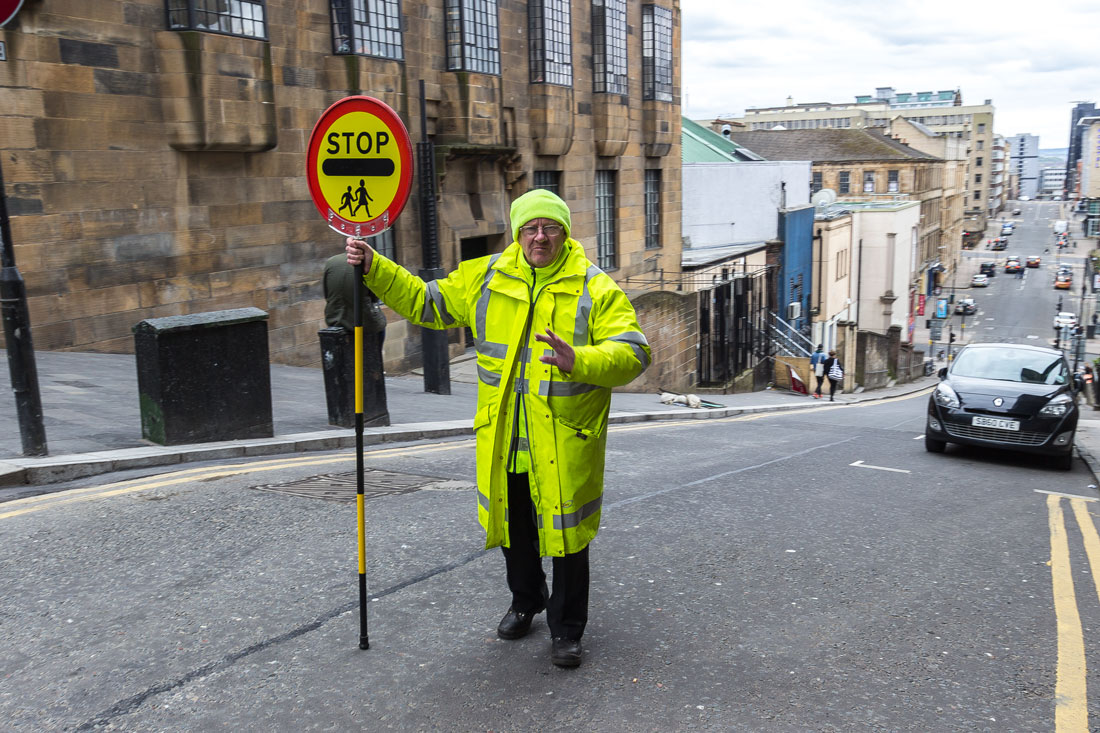
The streets.

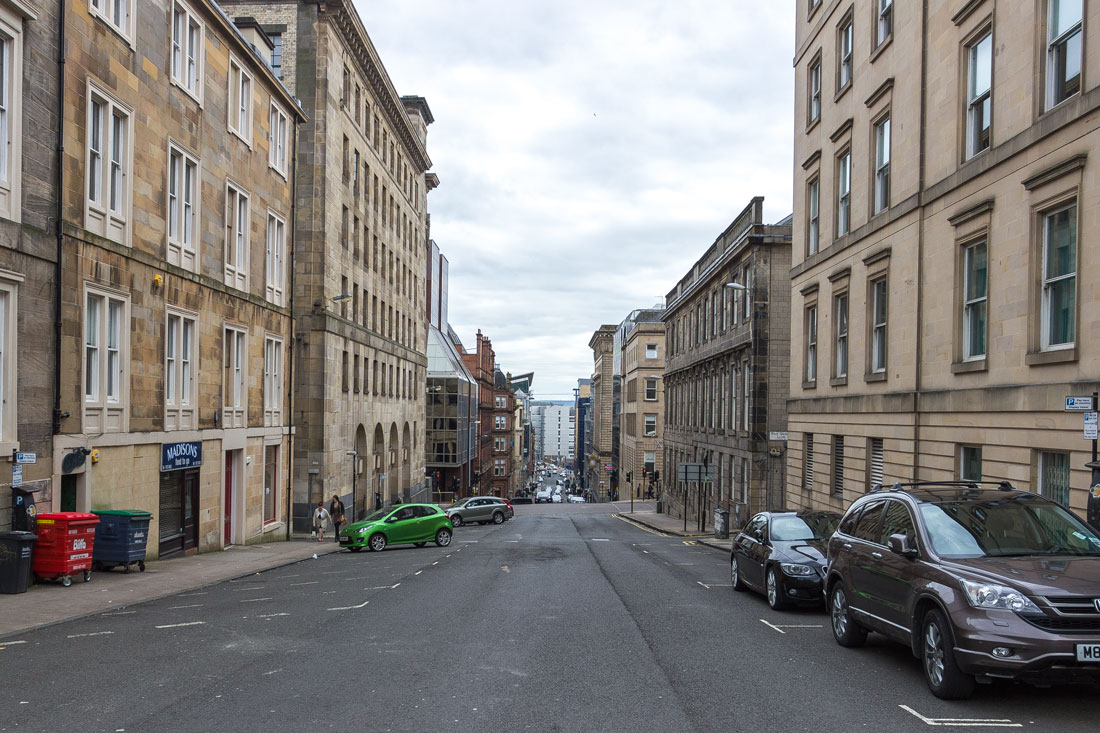
The facades.

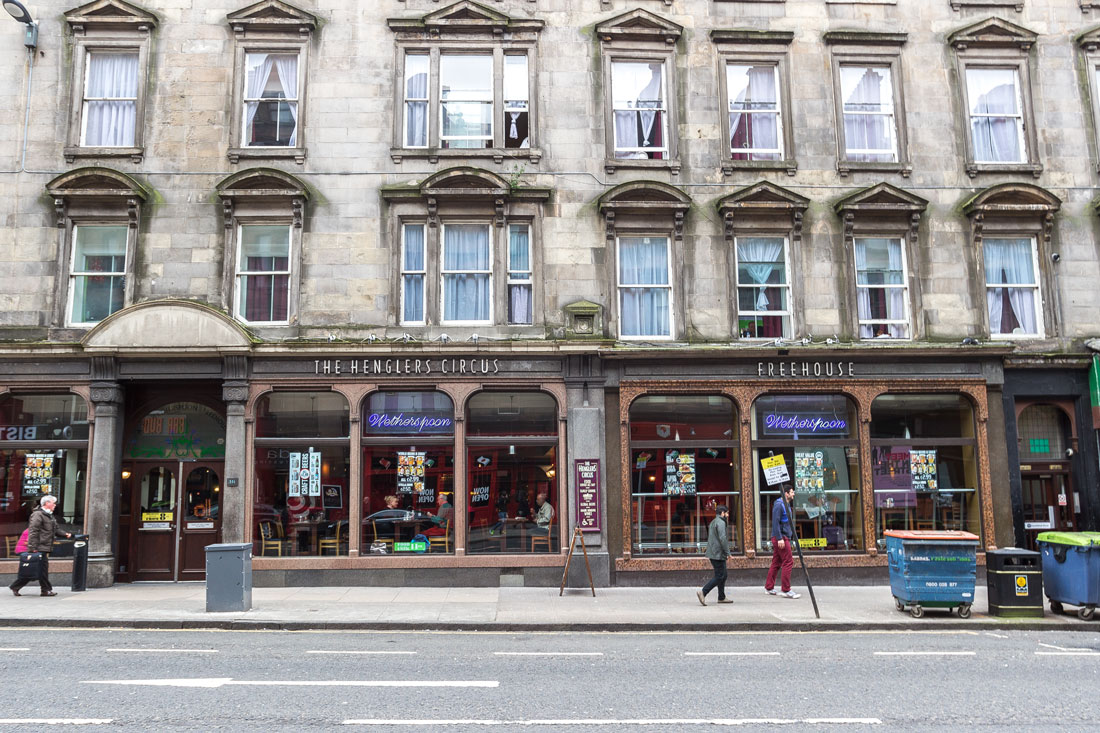


The alley in the center.
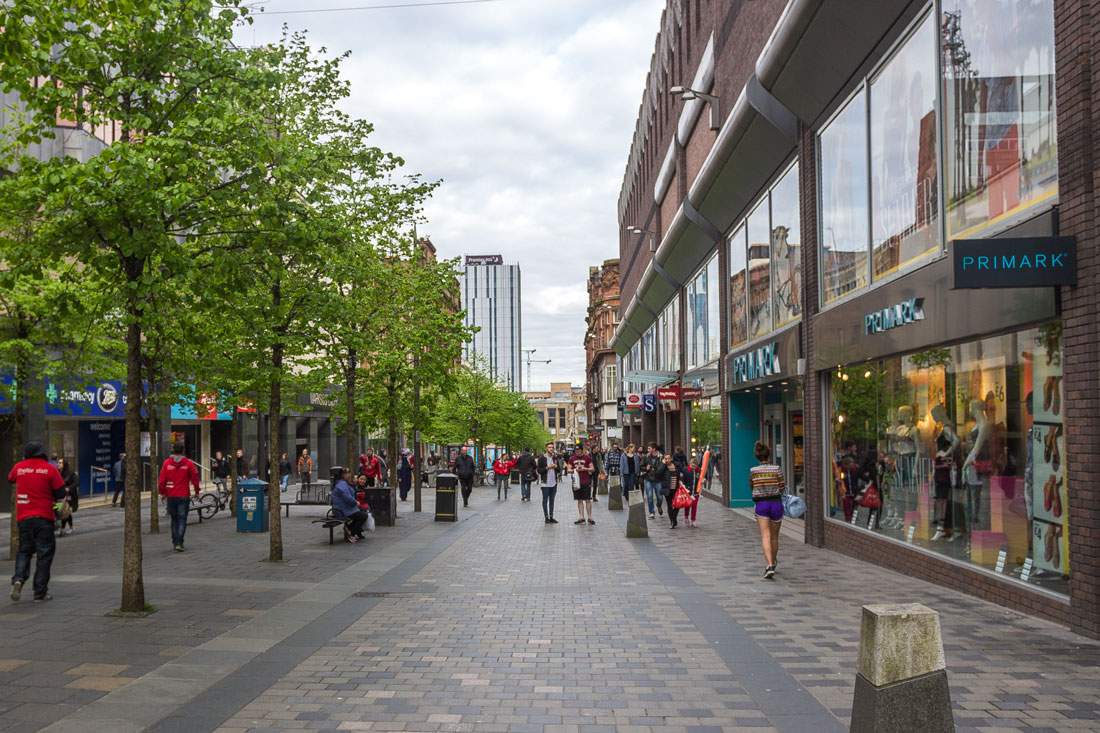
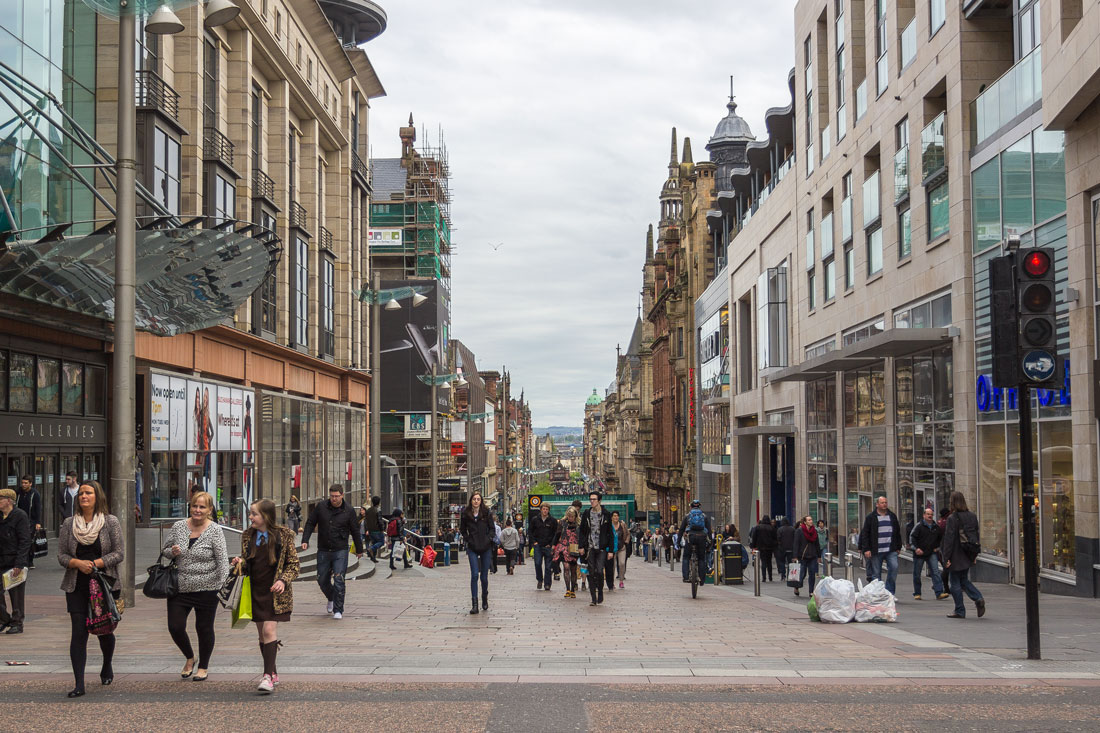
The streets are beautiful, but what lies behind them? The alleys in Glasgow are extremely dirty and grim.

The road is squeezed into two lanes by cars, and in many places, there’s no space left from the cobblestones – just dirt and litter.
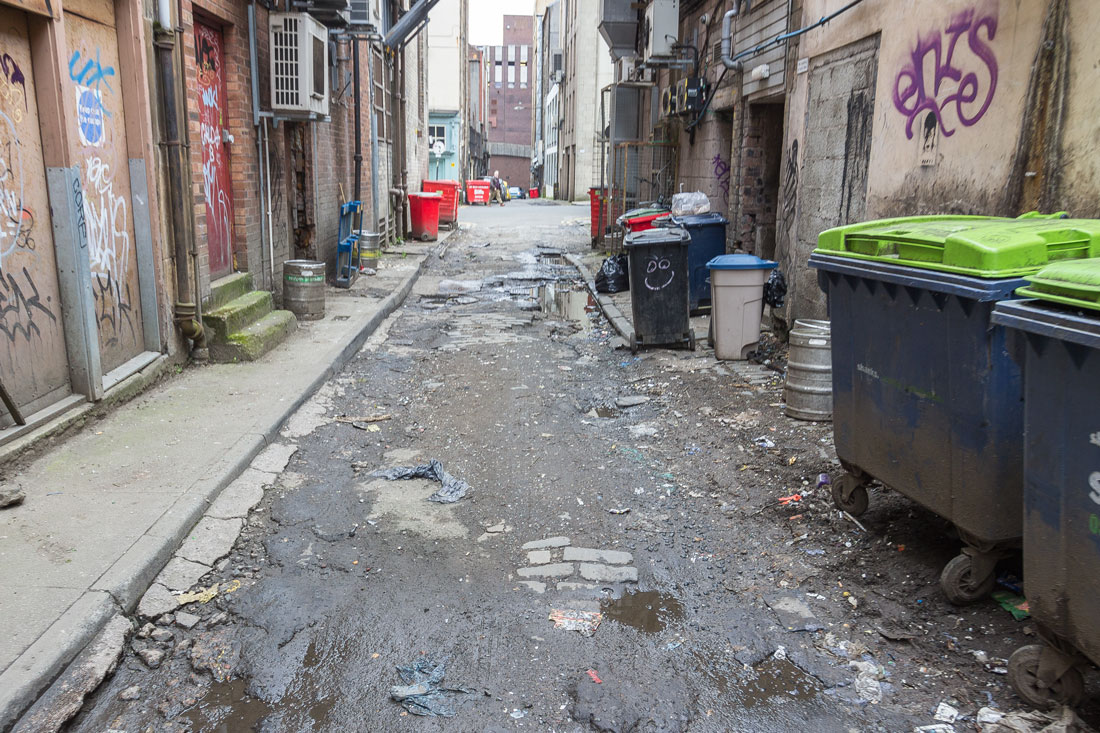
Here are the back entrances to restaurants and pubs. Goods are delivered on trucks, and trash is dumped into bins.
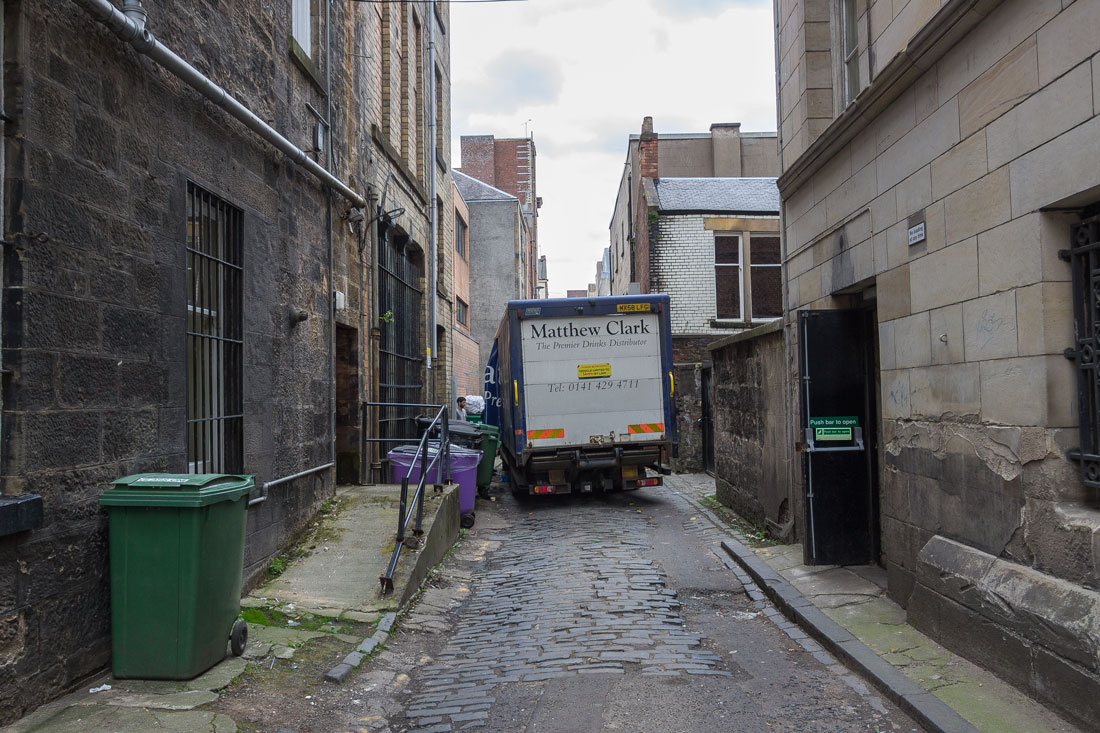
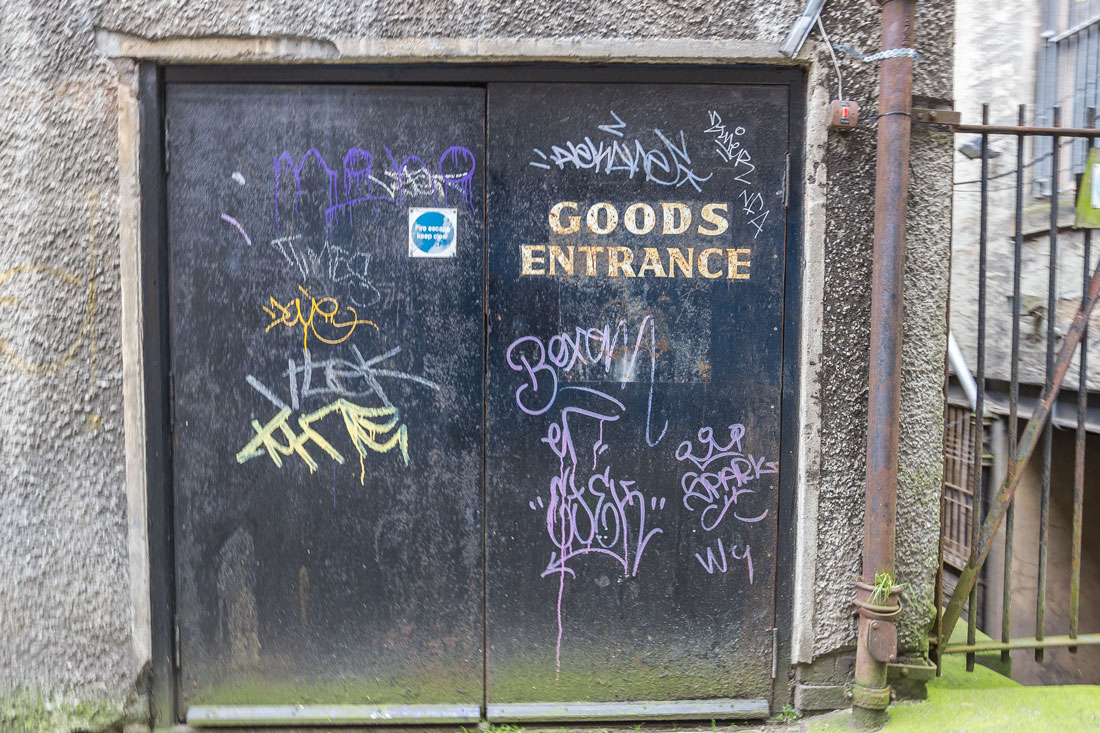
All ventilation systems and air conditioners exit here.
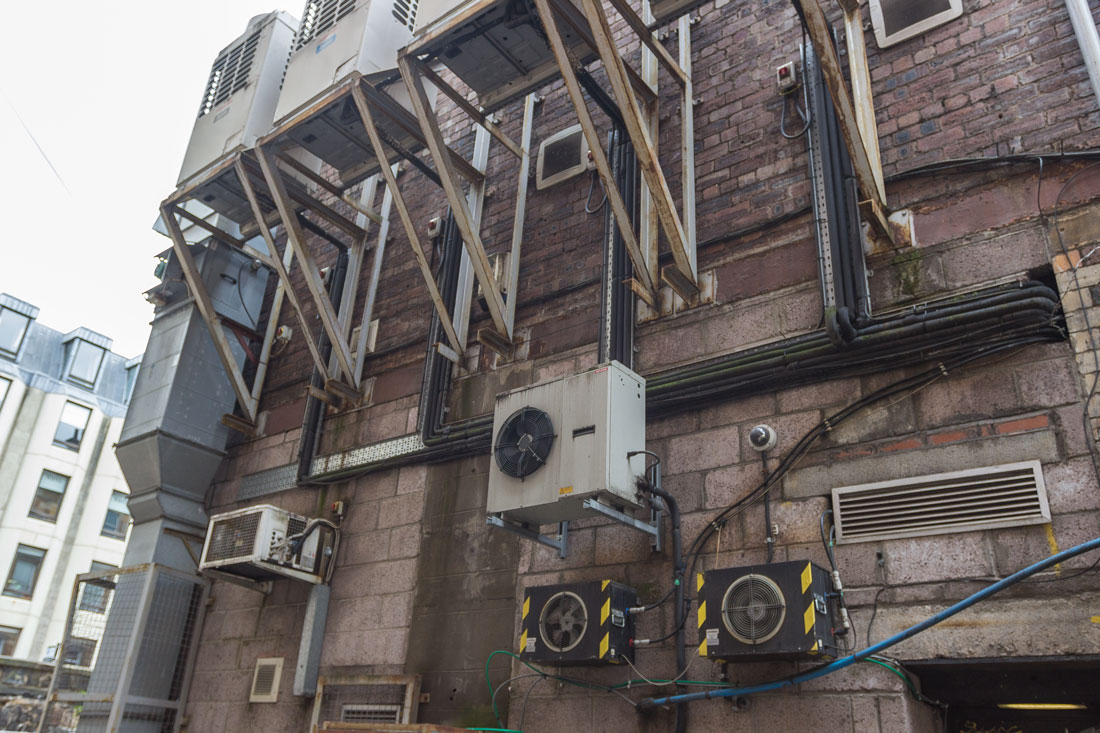

Even came across some overgrown vacant lot. In the center of a British city — an overgrown vacant lot!
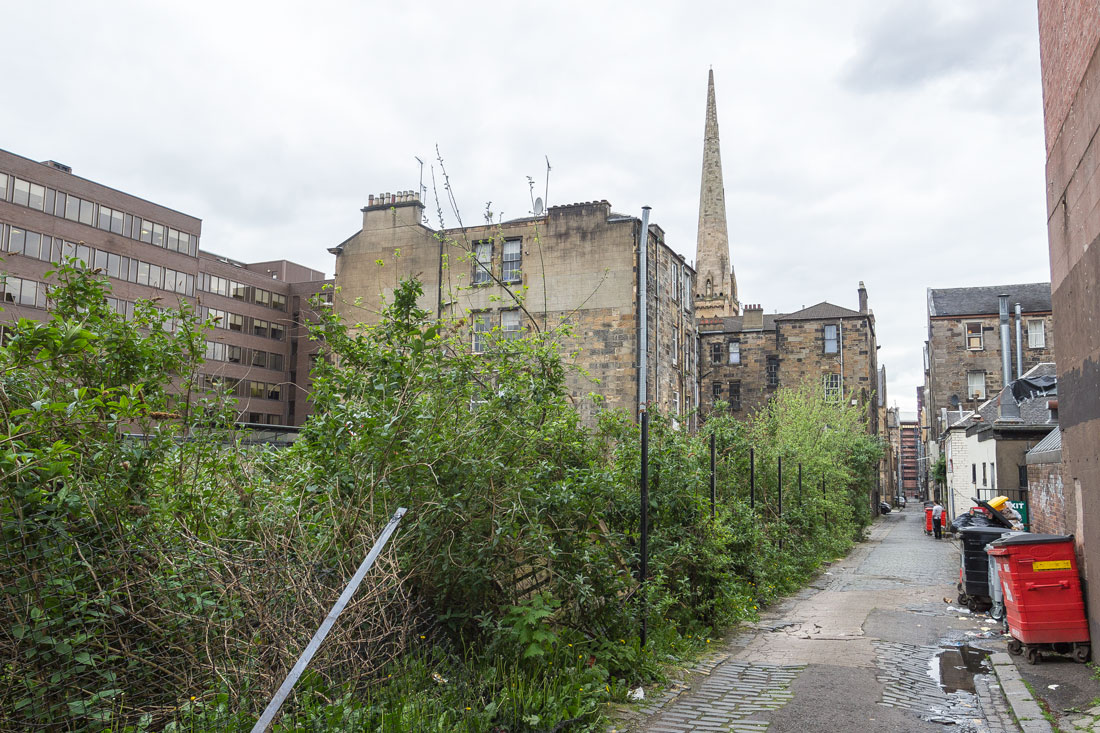
The crumbling house barely stands on monstrous wooden supports.
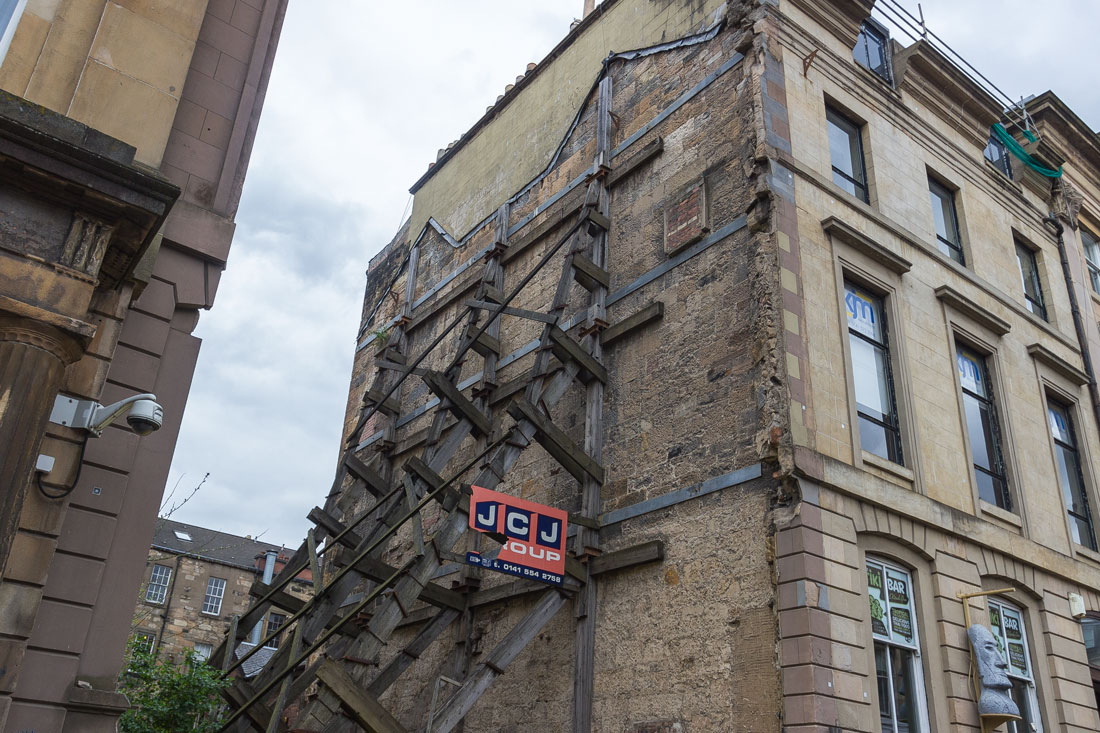
I wouldn’t want the view from my windows to overlook all of this.
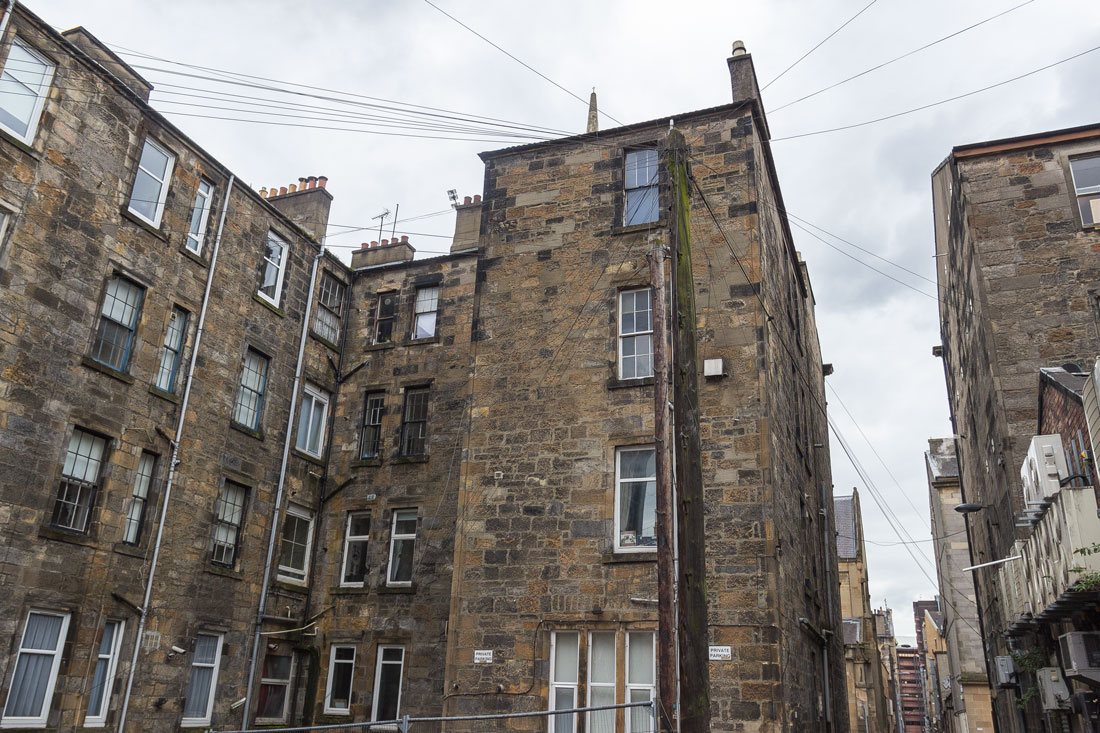

Glasgow has an incredibly large number of street performers. They play all kinds of instruments here. Sauchiehall Street is filled with guitarists, violinists, drummers, and entire orchestras around the clock.
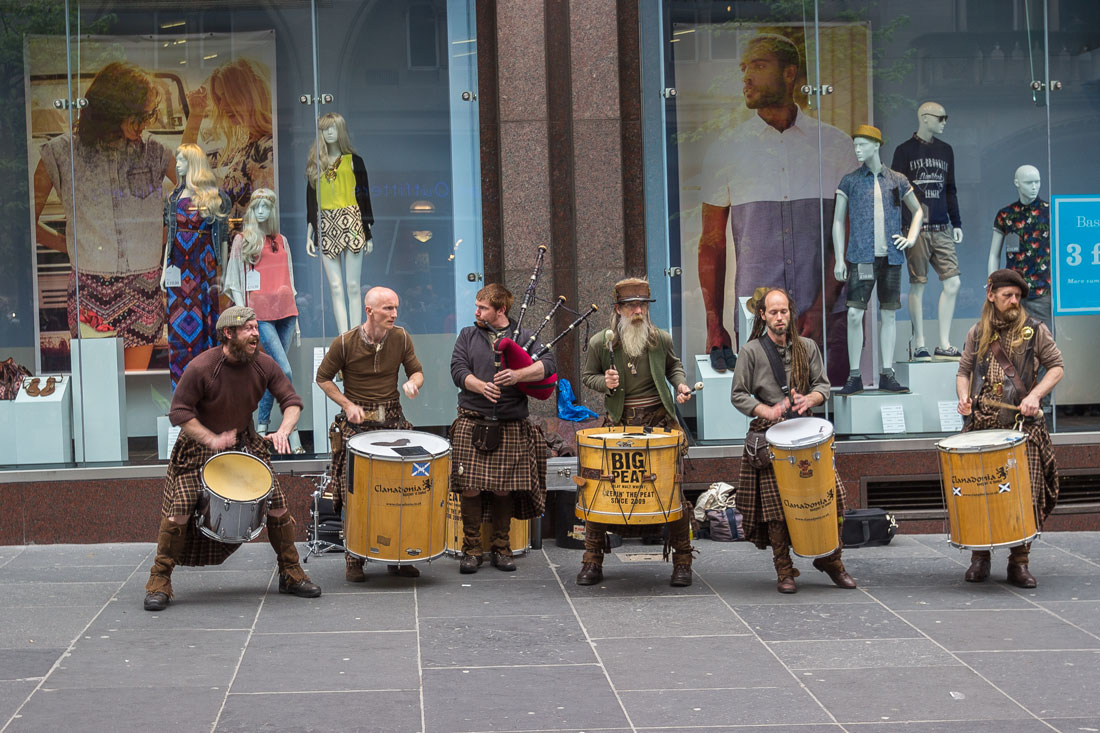

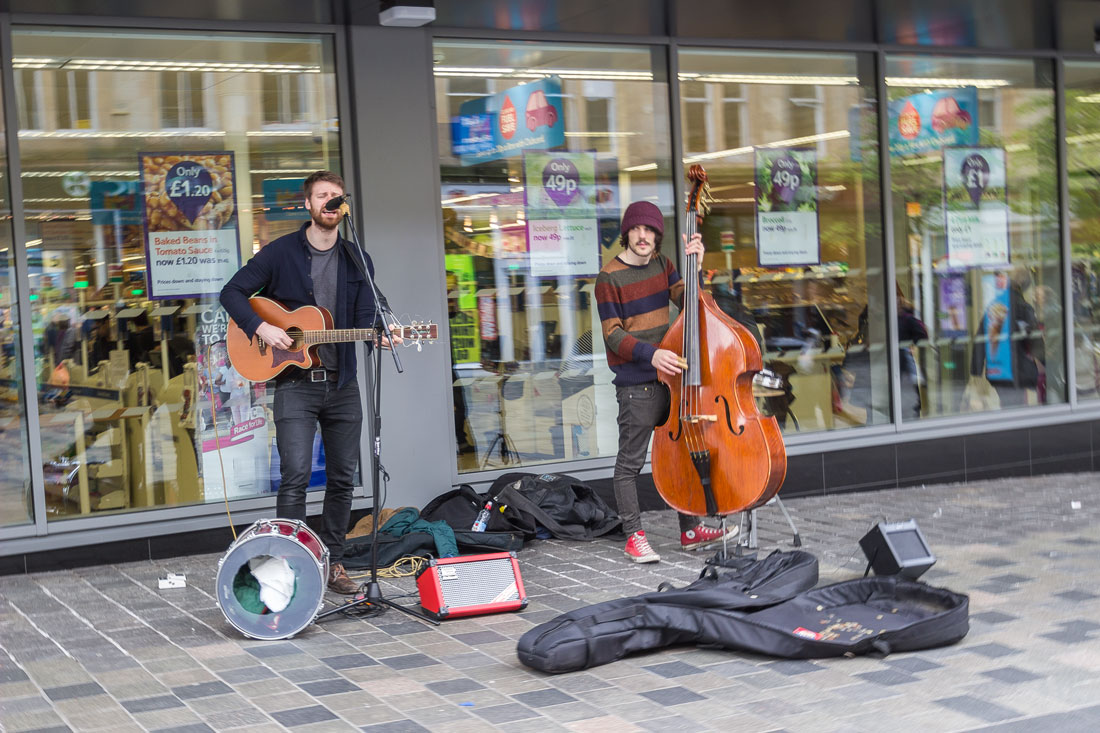
Glasgow is situated on hills. The city begins by the river, gradually rises to the north, and then makes a steep ascent in height. It bears some resemblance to San Francisco, although the slopes are much steeper in the latter.
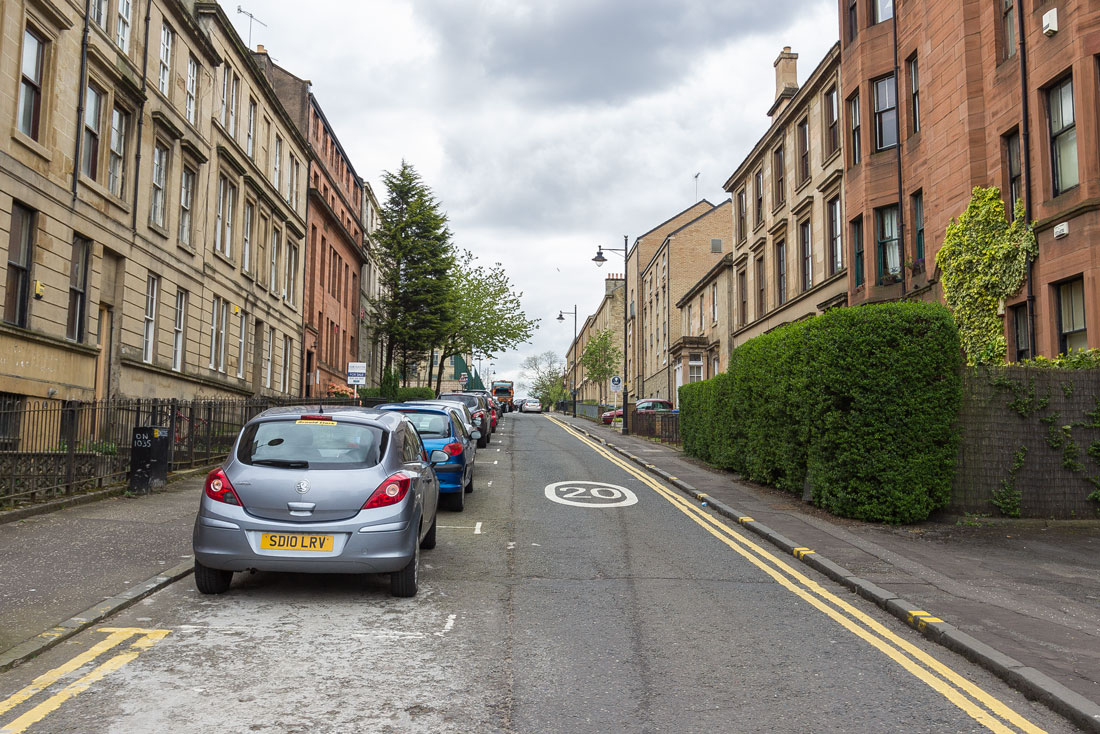

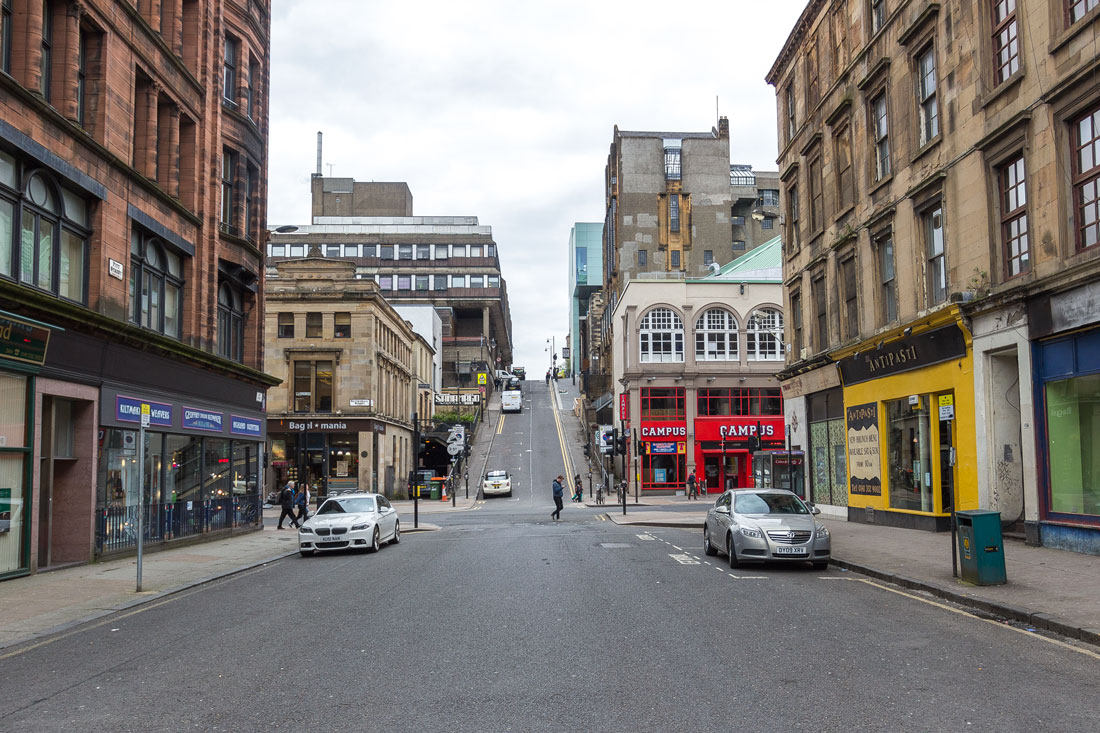
In places with steep inclines, iron handrails are installed along the streets for the entire ascent.
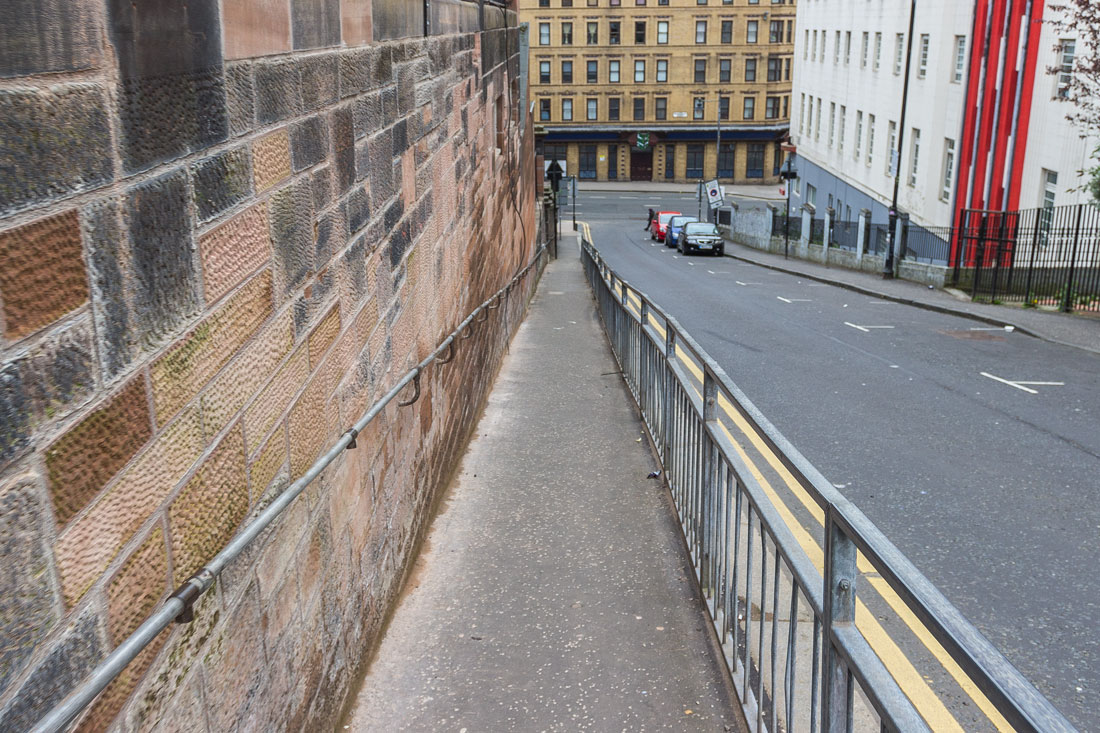
The houses located on the slope have high entrances accessible by stairs. The space between the house and the street is not utilized, although windows open out to it. In London, a small garden or patio would be placed here.
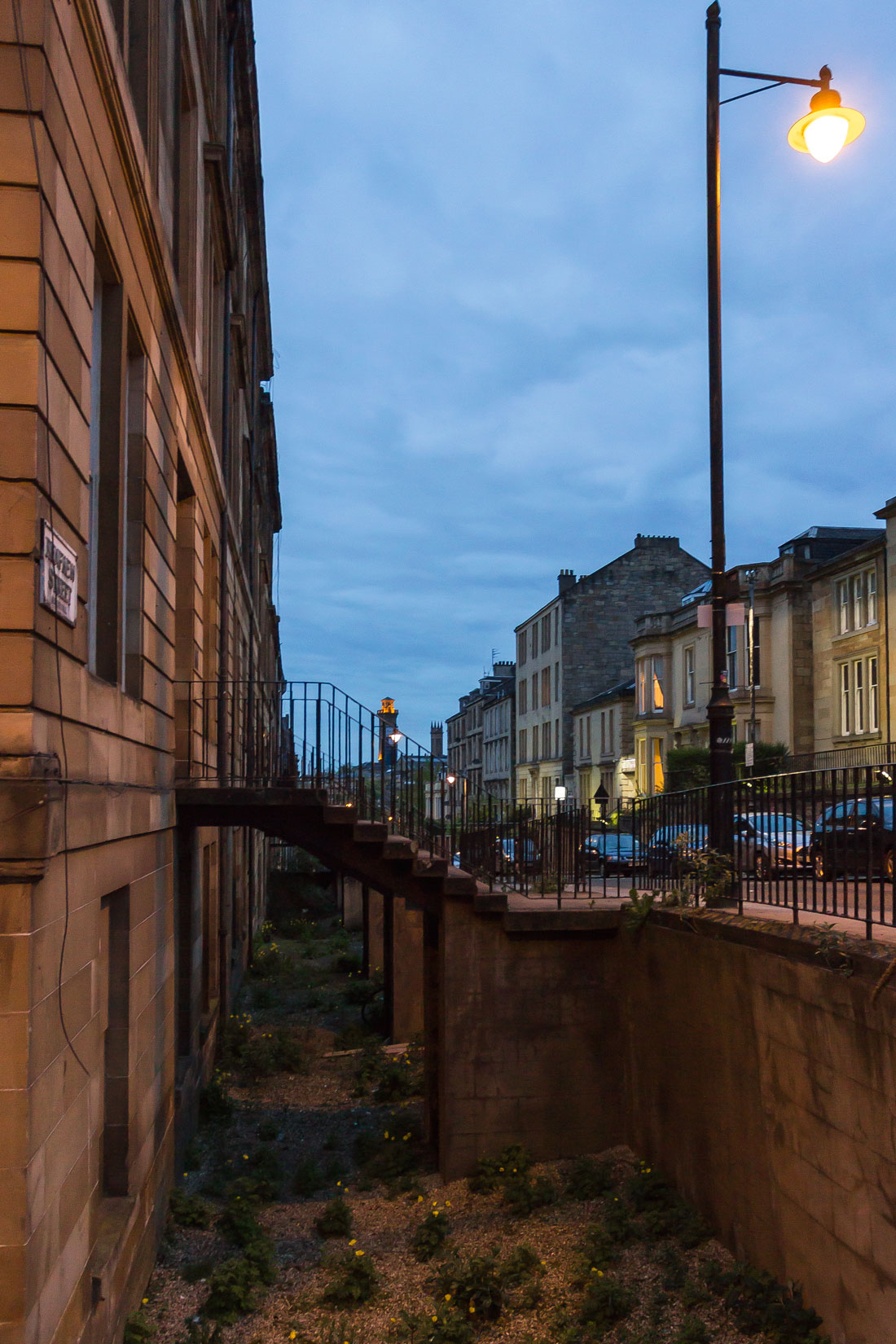
The houses at the very top of the hill. It’s a guesthouse where I stayed.
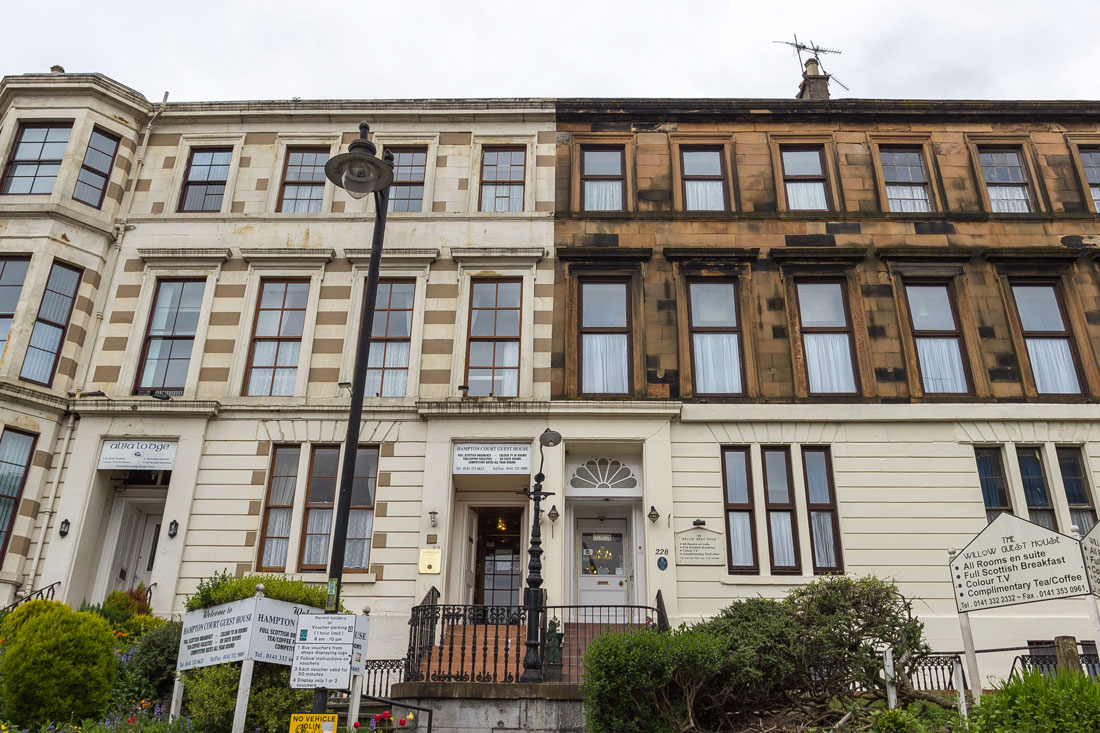
My room is one of the rooms in this house. This is what the accommodation looks like here. The bedrooms are small, and the living rooms and halls are bigger. But nothing supernatural. It just appears that the houses are luxurious at first glance.
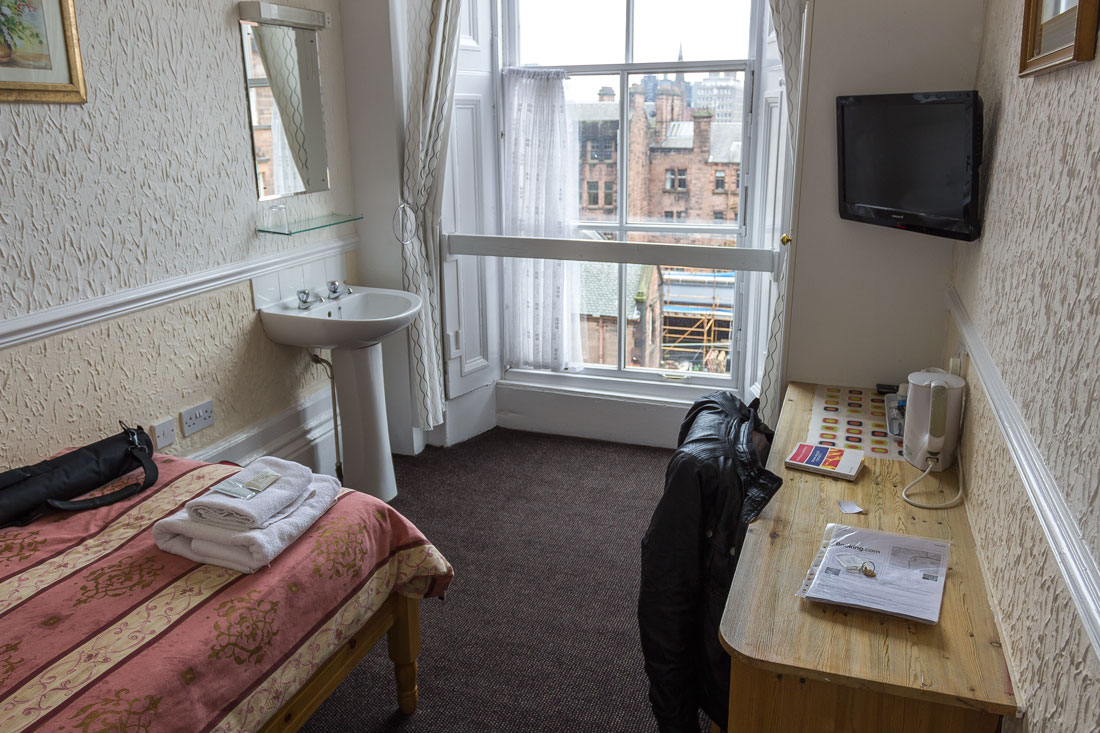
The sink is the same, English style, with two faucets. You need to close the hole with a plug, mix water of the desired temperature, and wash, splashing in this puddle.

Some road signs are illuminated at night. The lanterns have a pleasant shape and color. No one here is planning to switch to daylight lamps with their unpleasant surgical light yet.
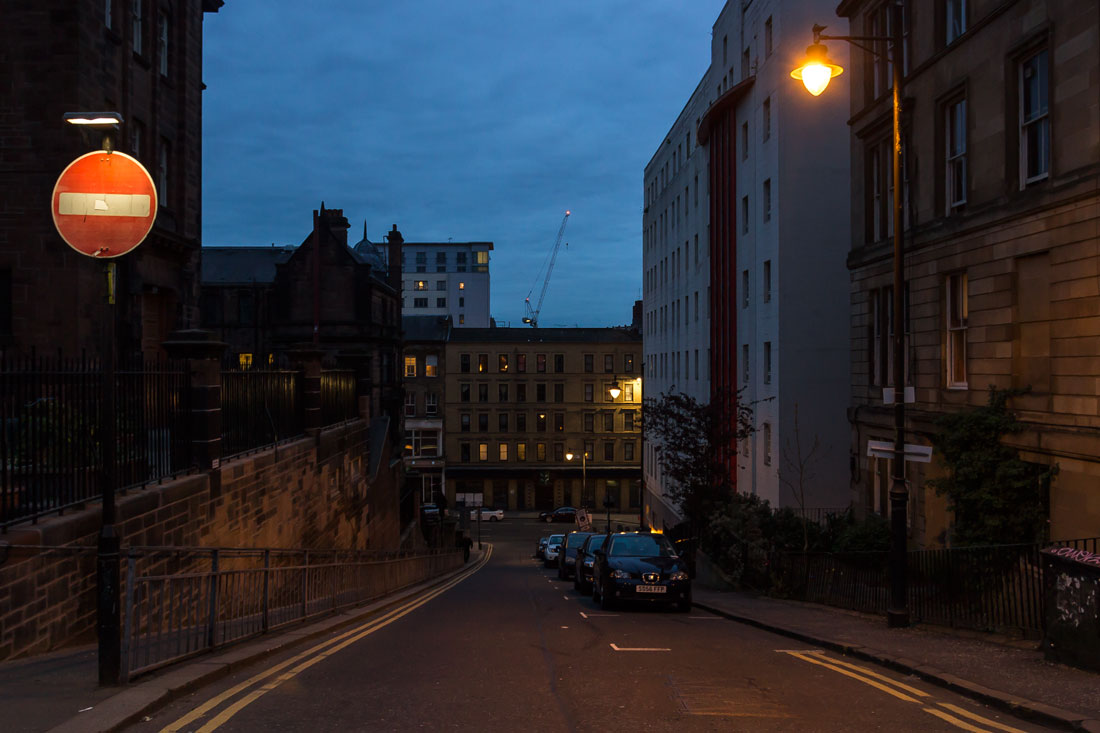
The nighttime lighting of the entrances/hallways.

In the city center, at George Square, there is a row of simple benches and emptiness. In the square stands a column — a monument to the writer Walter Scott, and on the side, a modest monument in honor of the renowned inventor James Watt, who lived in Glasgow.
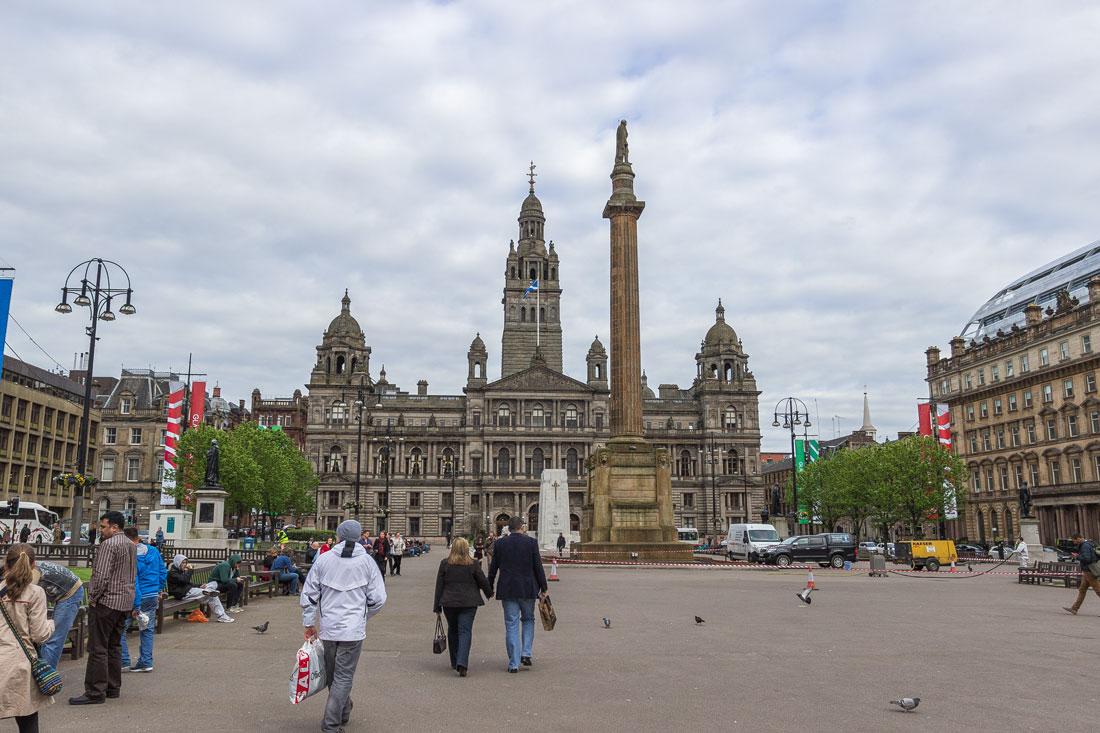
On the wall of the City Council building, there are standards for the foot and yard.
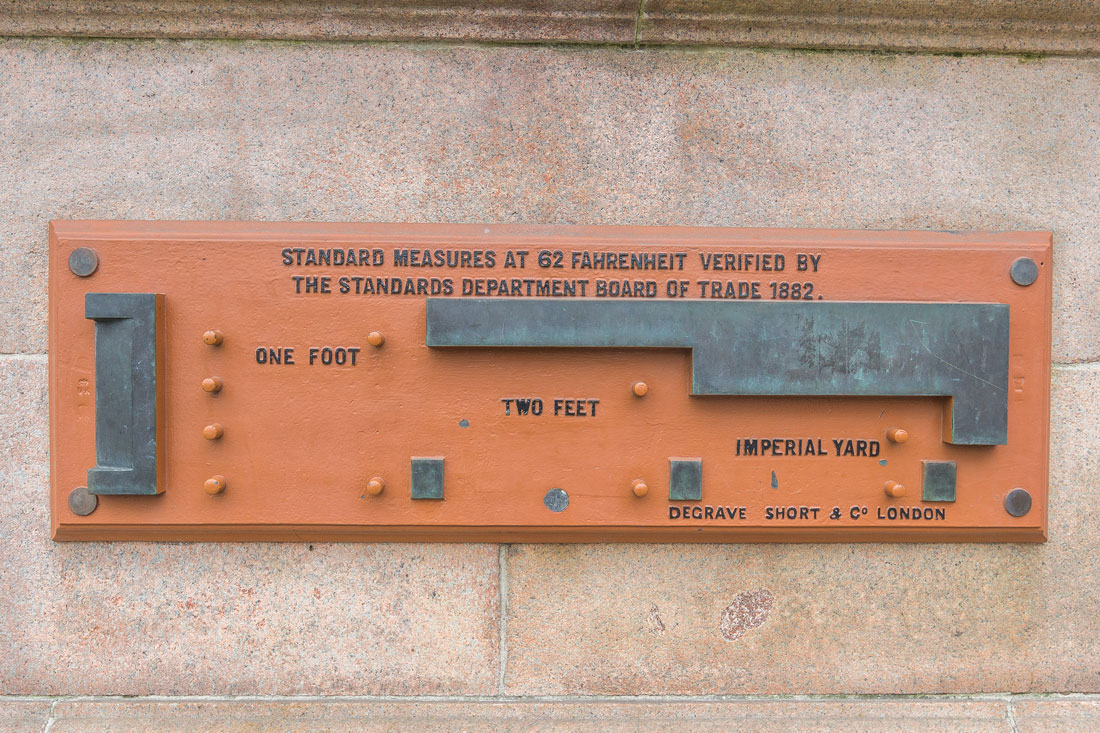
An astonishing detail is how the number seven is sometimes written in Scotland. It is exactly an inverted two. The number eight is also inverted here because the thick line should be on the other side. One could think that someone placed the column upside down, and the actual house number is 82 instead of 28. However, I have encountered this kind of writing for the number seven not only once in Glasgow and Edinburgh. No information could be found on this matter. I dare to speculate that an inverted stencil of the number two was occasionally used instead of the stencil for the number seven. Why this is the case remains a mystery.
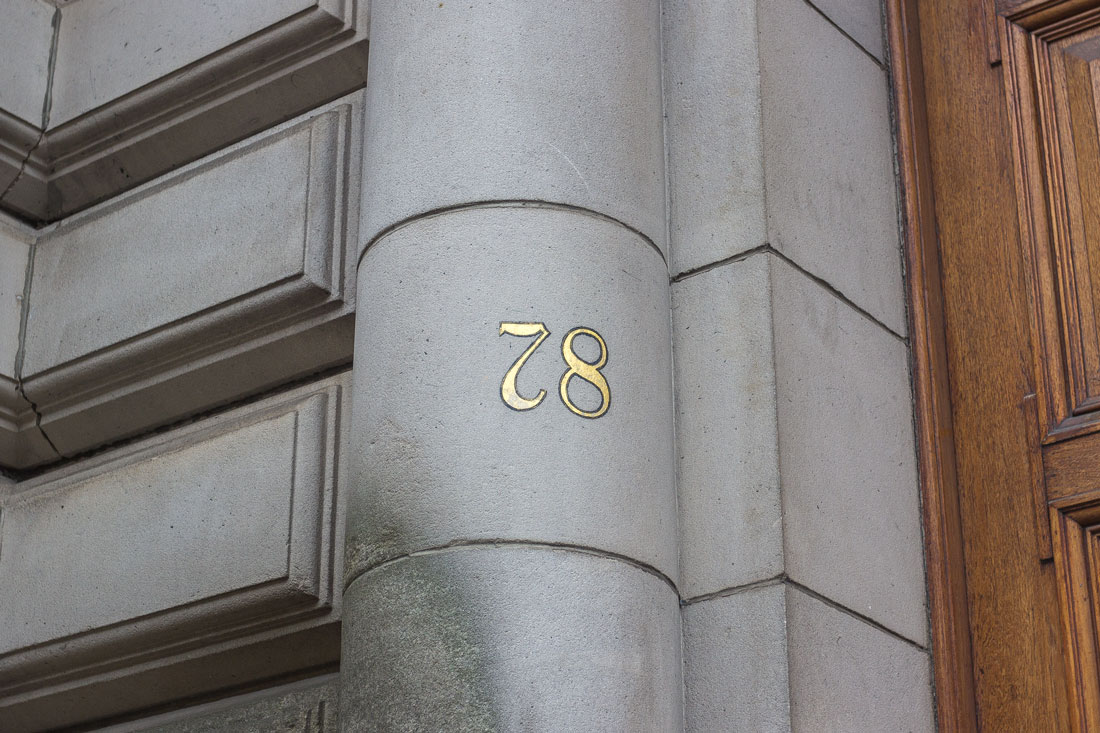
Bus stop.
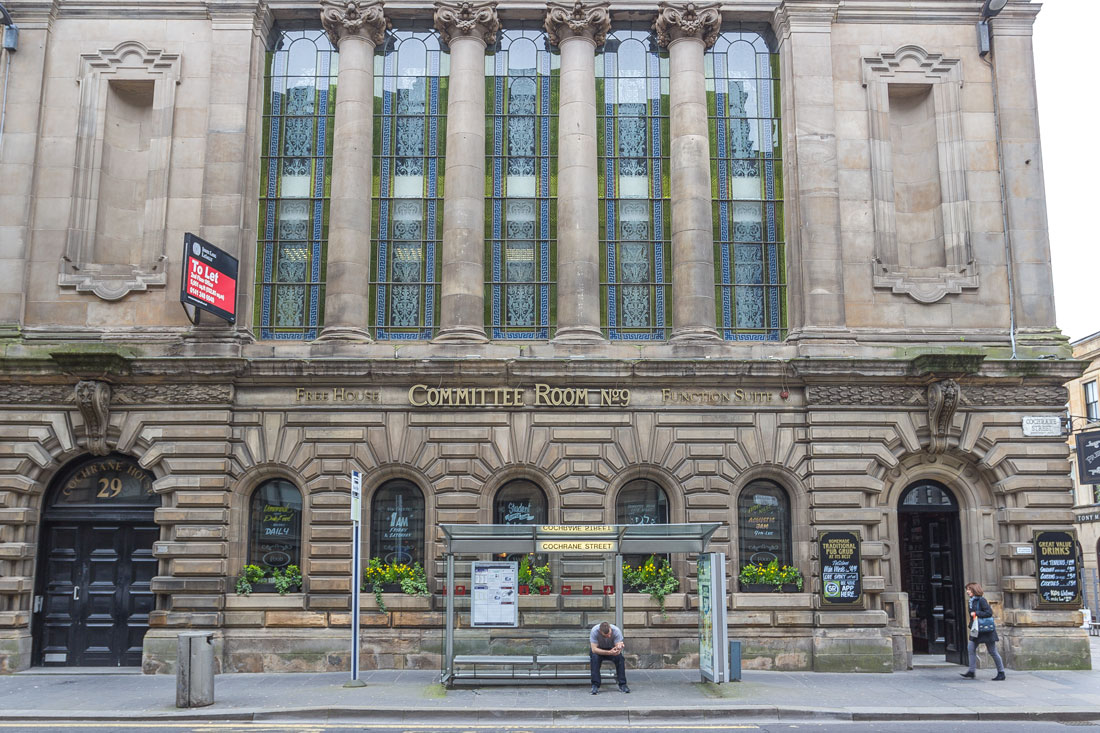
Buses.
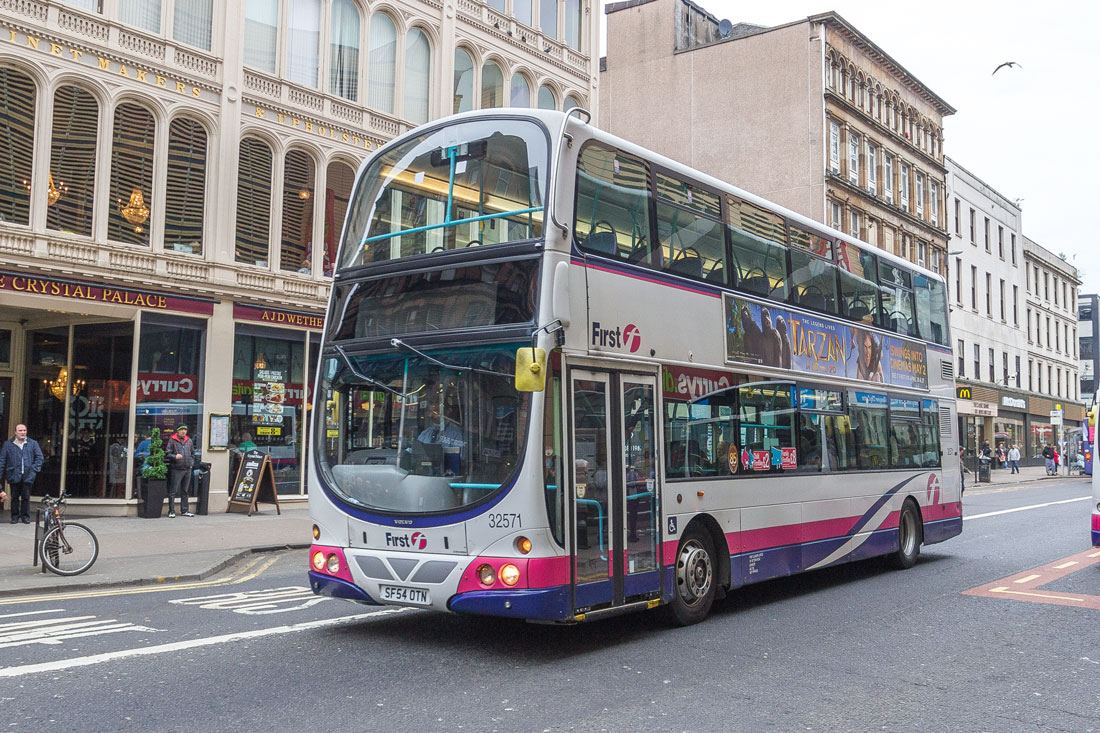
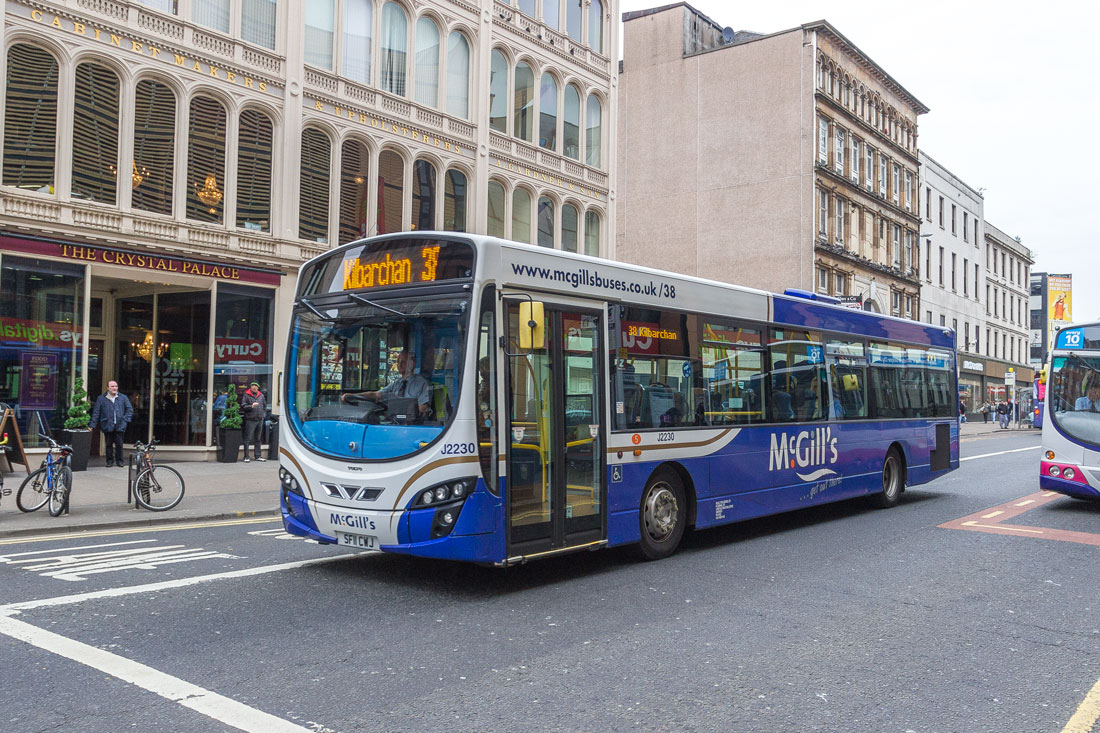
Entrance to the metro on central streets. It is designed very stylishly, with a glassy and high-tech look.

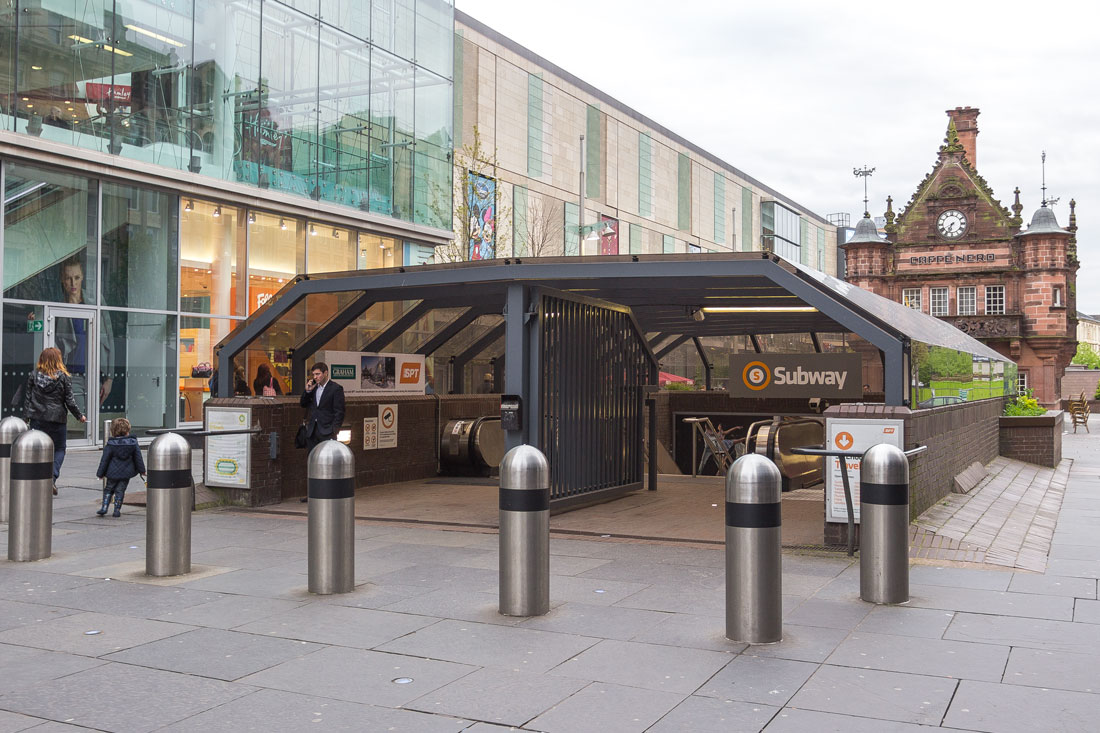
Ticket vending machine.
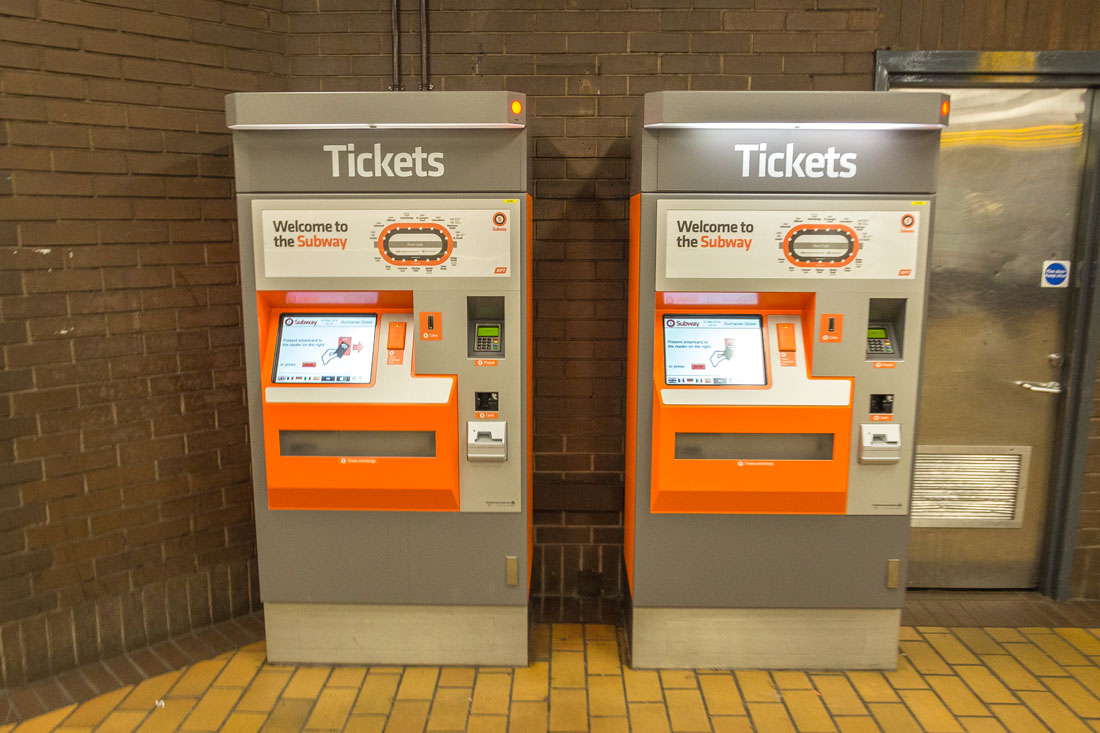
A metro map with just one circular line doesn’t require a team of designers.

The Glasgow subway train looks like a sausage.

It’s low inside.
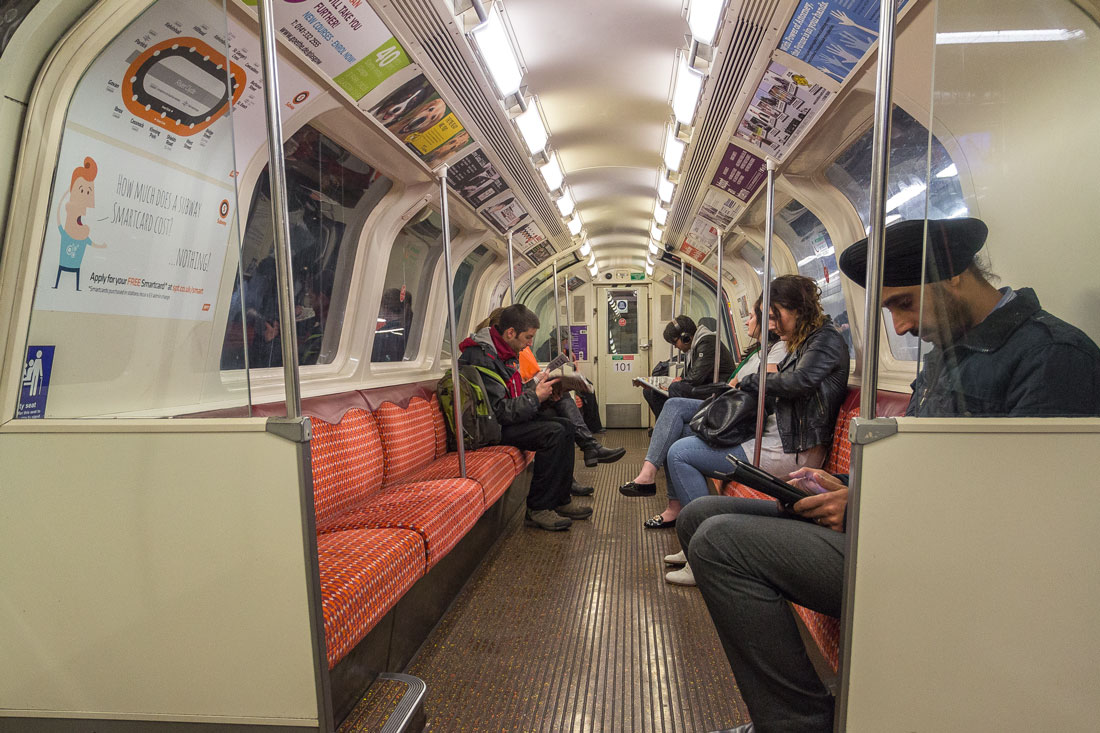
The stations are also tiny.

The passenger flows are separated by rails along the entire length of the staircase.

The suburban train station is called “Exhibition Center”.

Steam locomotive.

At the end of the station, there are boards placed to prevent people from climbing. In other places in England, I have seen special metal spikes instead of boards. They are probably more effective.

Suburban electric train carriage.
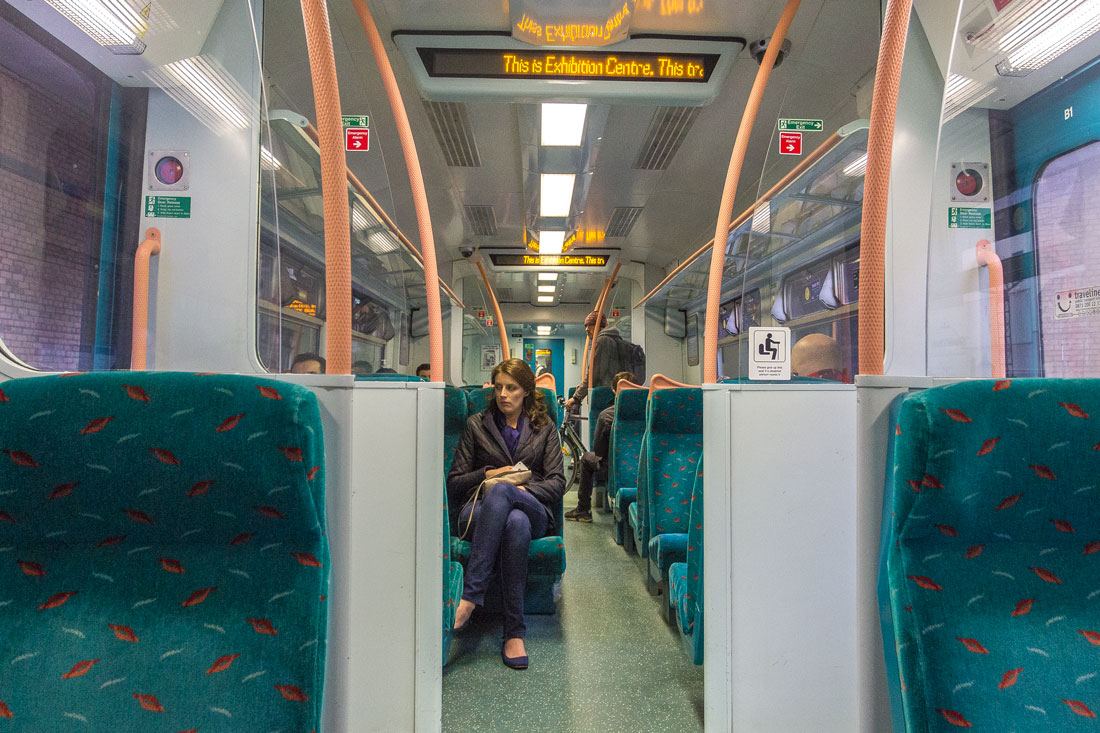
“Glasgow Central” station.
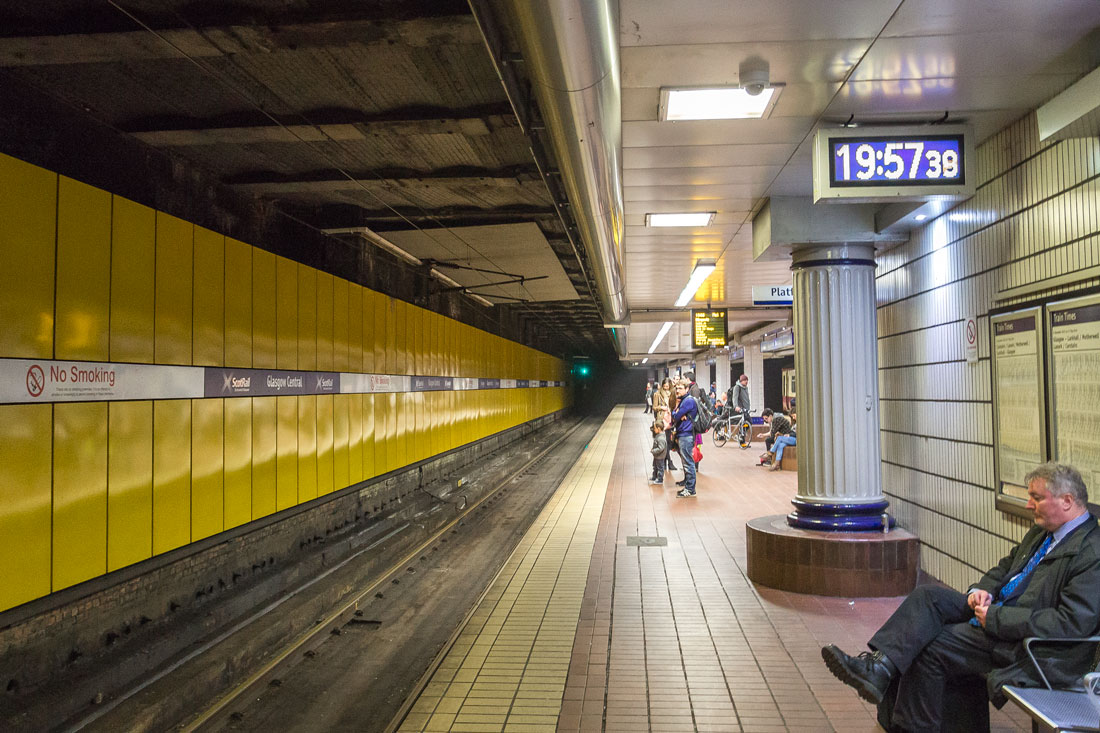
There are several high-rise residential buildings in Glasgow. They are located on the outskirts of the city, and you can count them on your fingers.
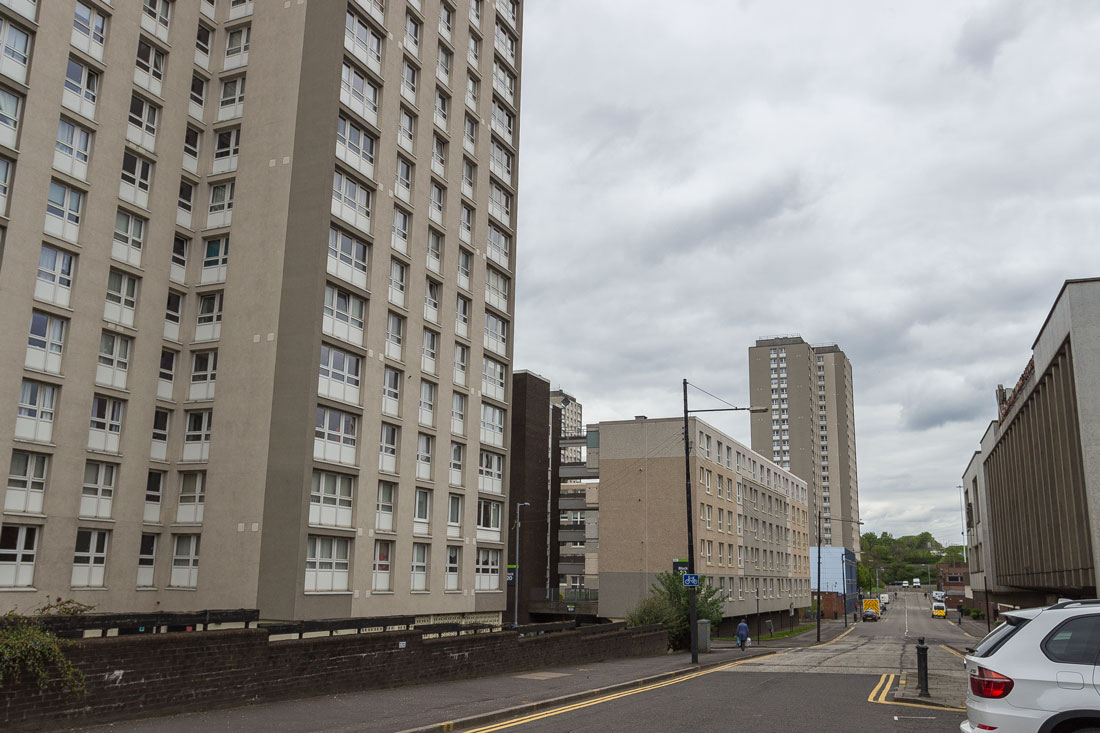
Bridge across the River Clyde.

Inside another bridge, a separate bicycle lane is laid out.
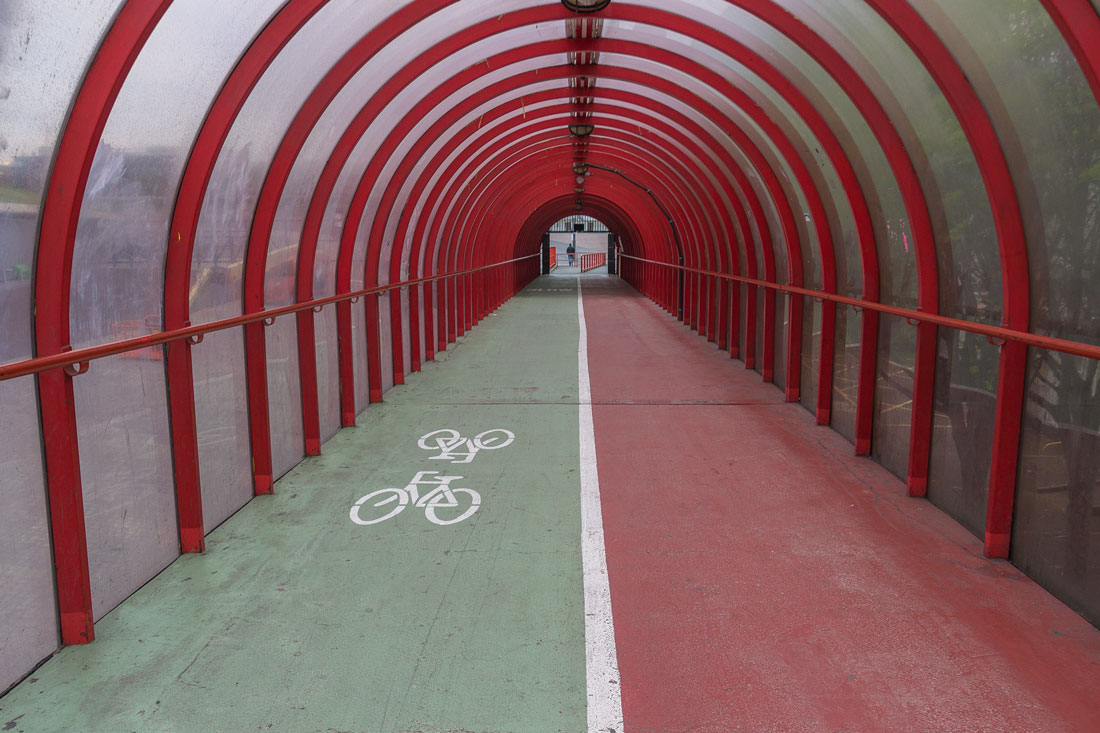
On the other side of the river, the city is decaying. On one side, there are brand-new cottages, while on the other side, it is quite abandoned and dilapidated area.

Abandoned house. Unfortunately, it’s inaccessible — it is surrounded by a fence with barbed wire and equipped with surveillance cameras, despite being in such an unfavorable location.

Clothing bin. Such bins are often found in European countries. People throw away worn but still usable clothing in them, so that homeless individuals can make use of it.

Storm drainage is arranged in a row of evenly spaced holes in the curbstone.

It is difficult to come across a sign that is not secured with a couple of sandbags. Otherwise, it will lie on the ground due to frequent gusts of wind.
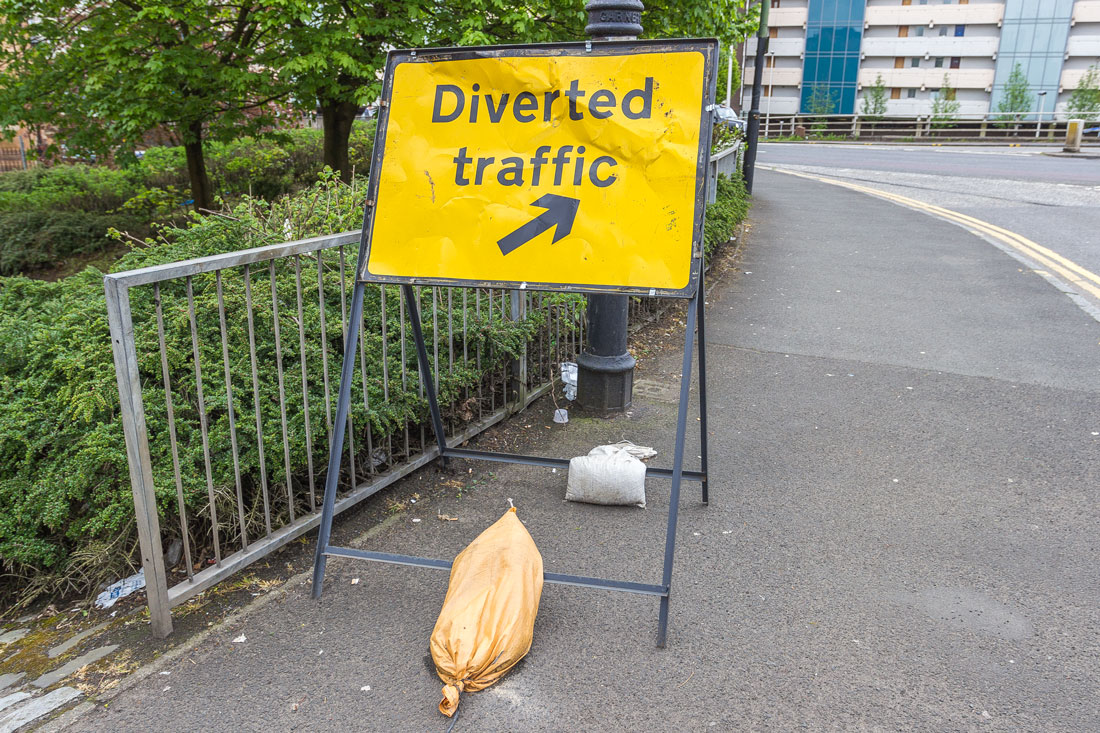
Trash bin.

Well, and finally: a Scottish toast — a sign on the wall of one of the pubs. A strange toast, more resembling a birthday greeting.
Mey the best ye hae iver seen
Be the worst ye’ll ever see
Mey the moose ne’er lea yer girnal
Wi the tear drap in its e’e
Mey yer lum keep bithely reekin’
Till ye’re auld eneuch tae dee
Mey ye aye just be sae happy
As a wiss ye aye tae be!
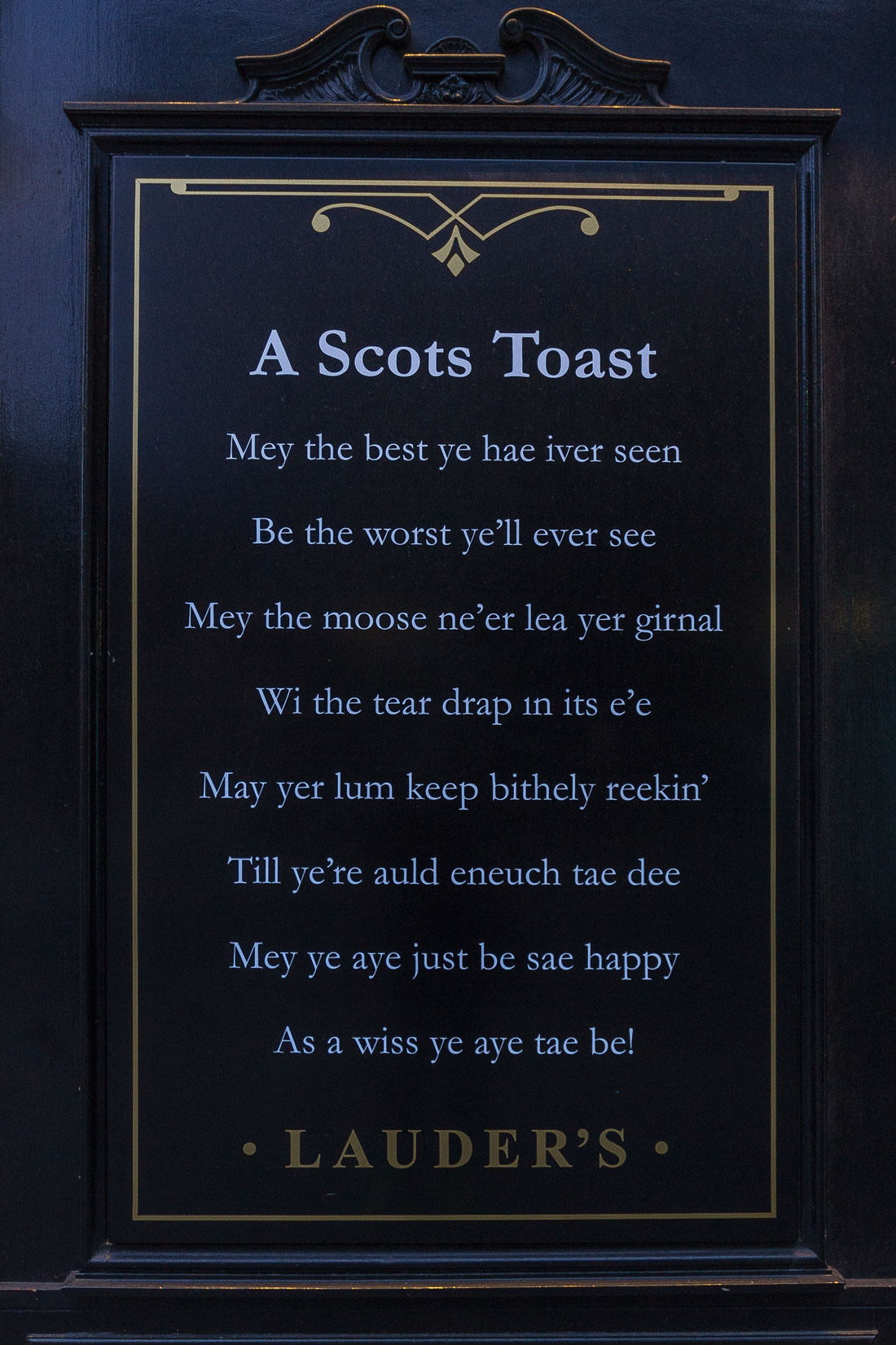
It’s hard to find something interesting to do in Glasgow for more than a day. The city of Edinburgh is right nearby — that’s where it’s truly fascinating.


